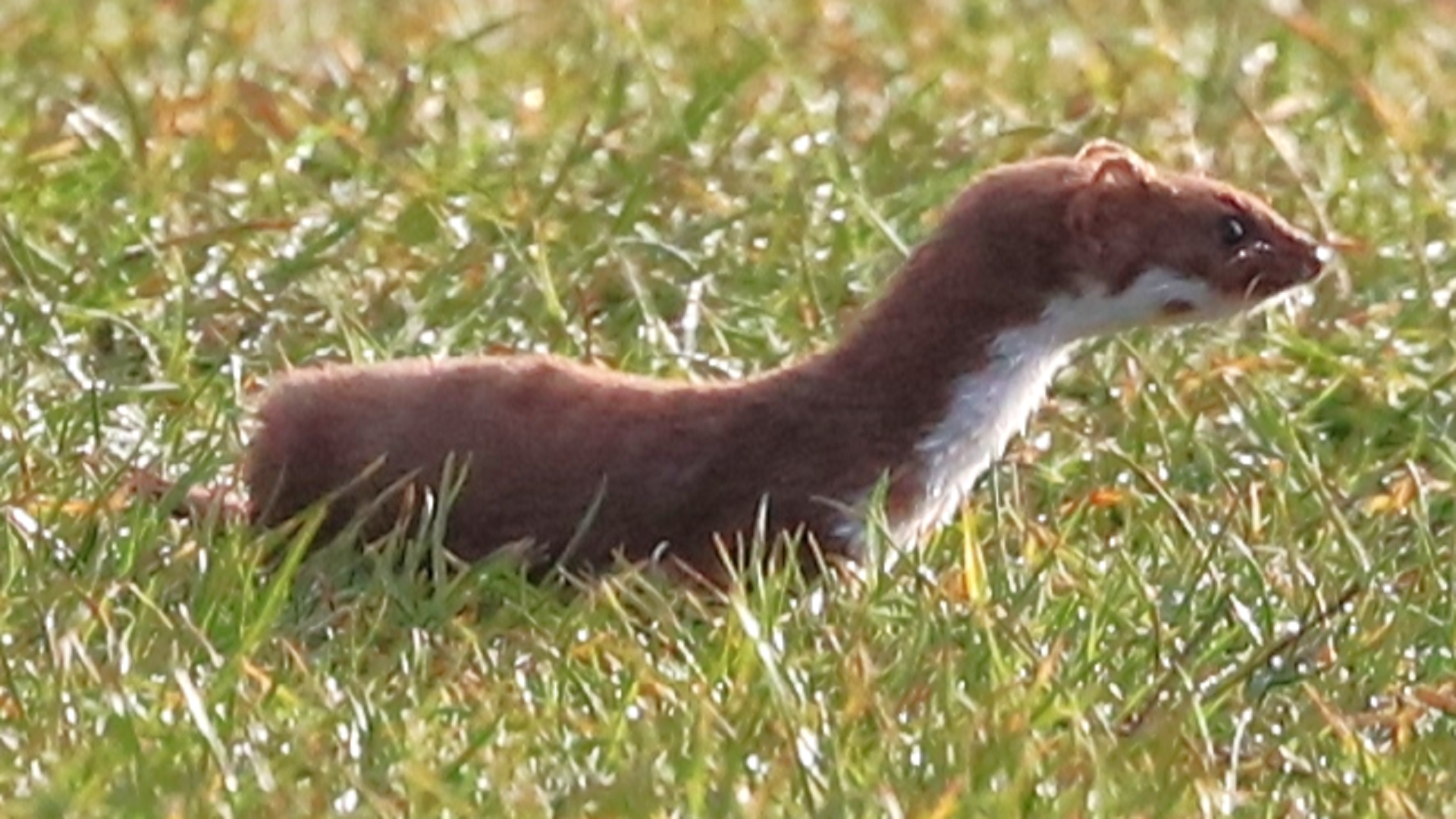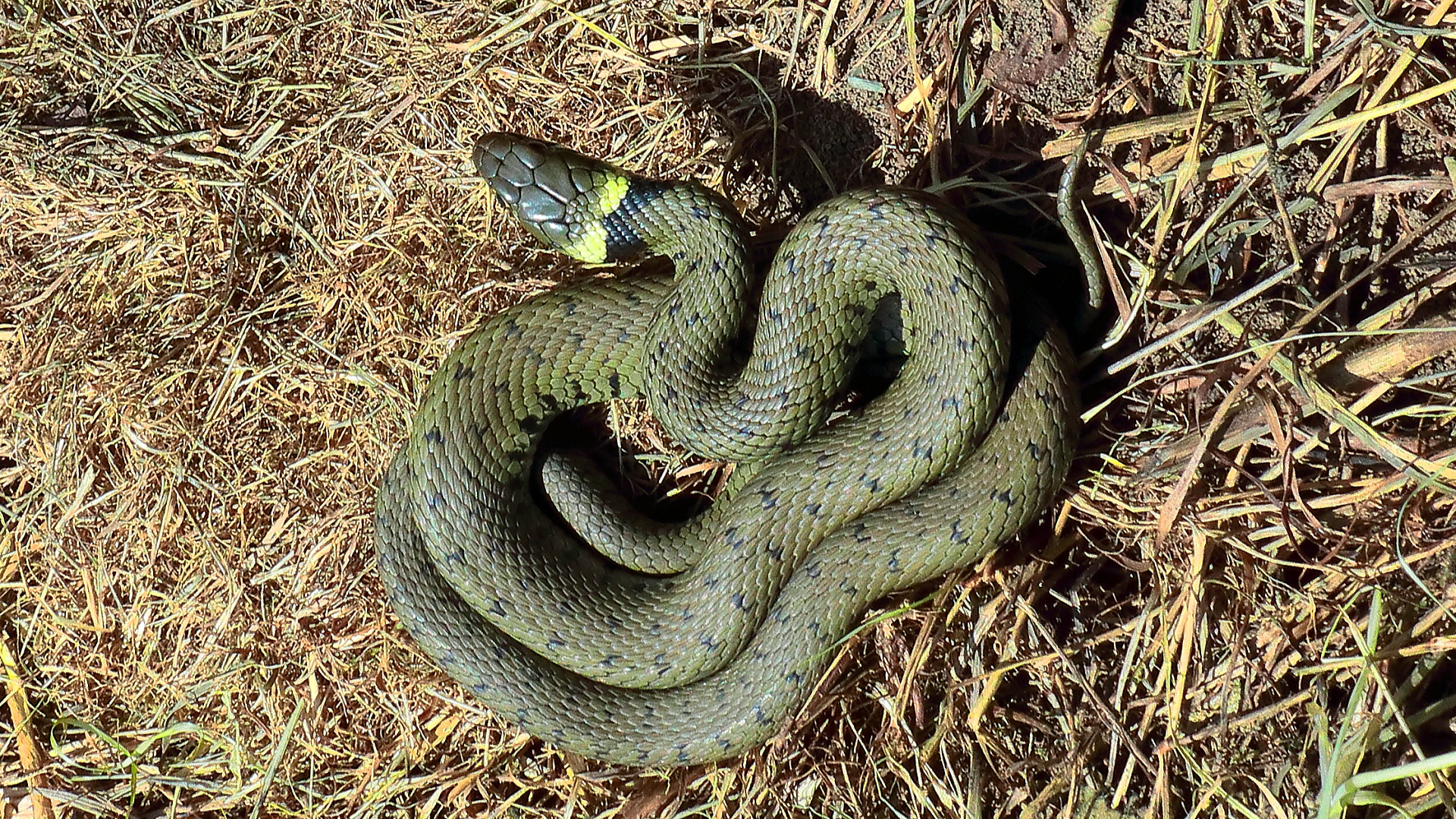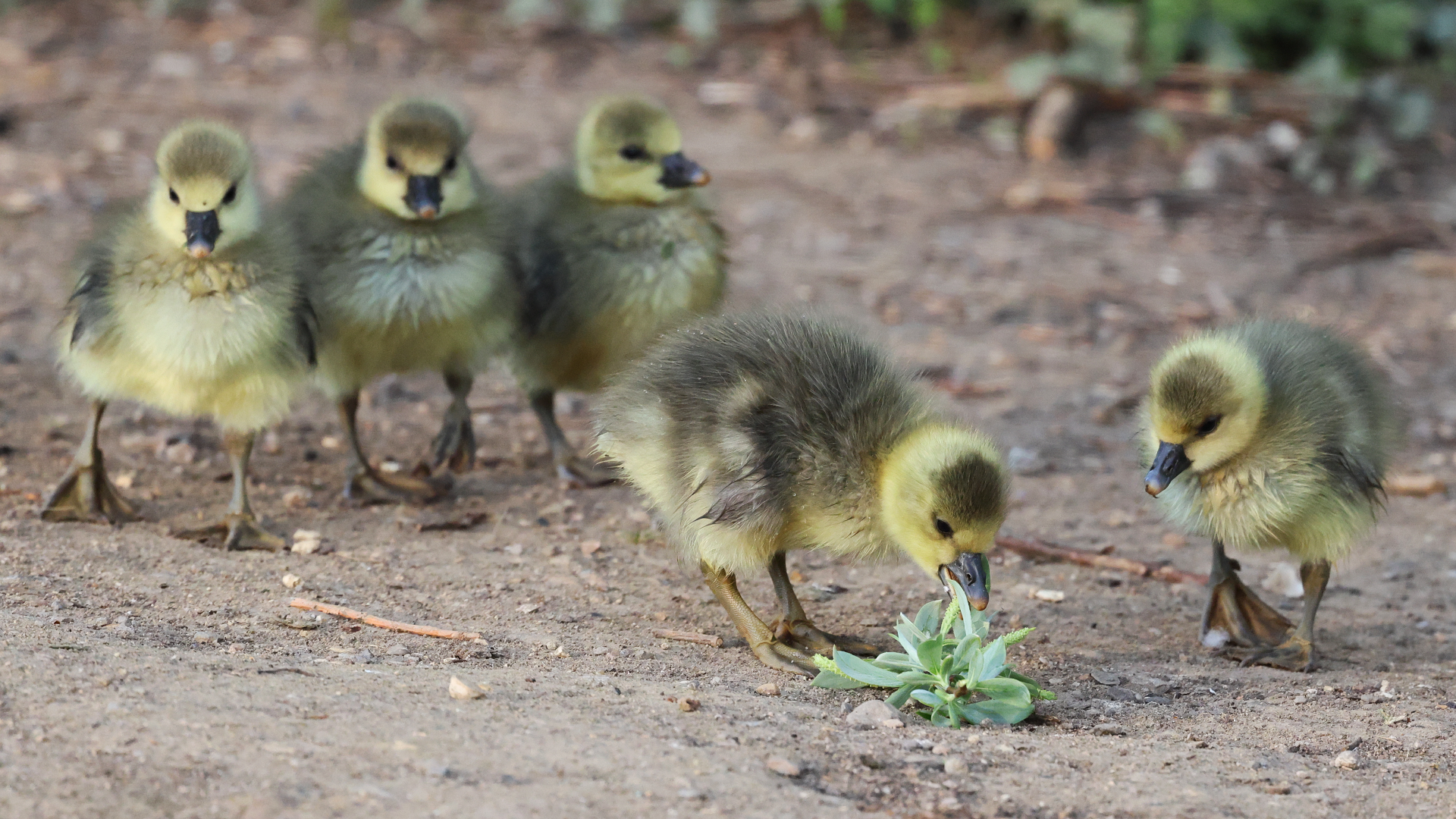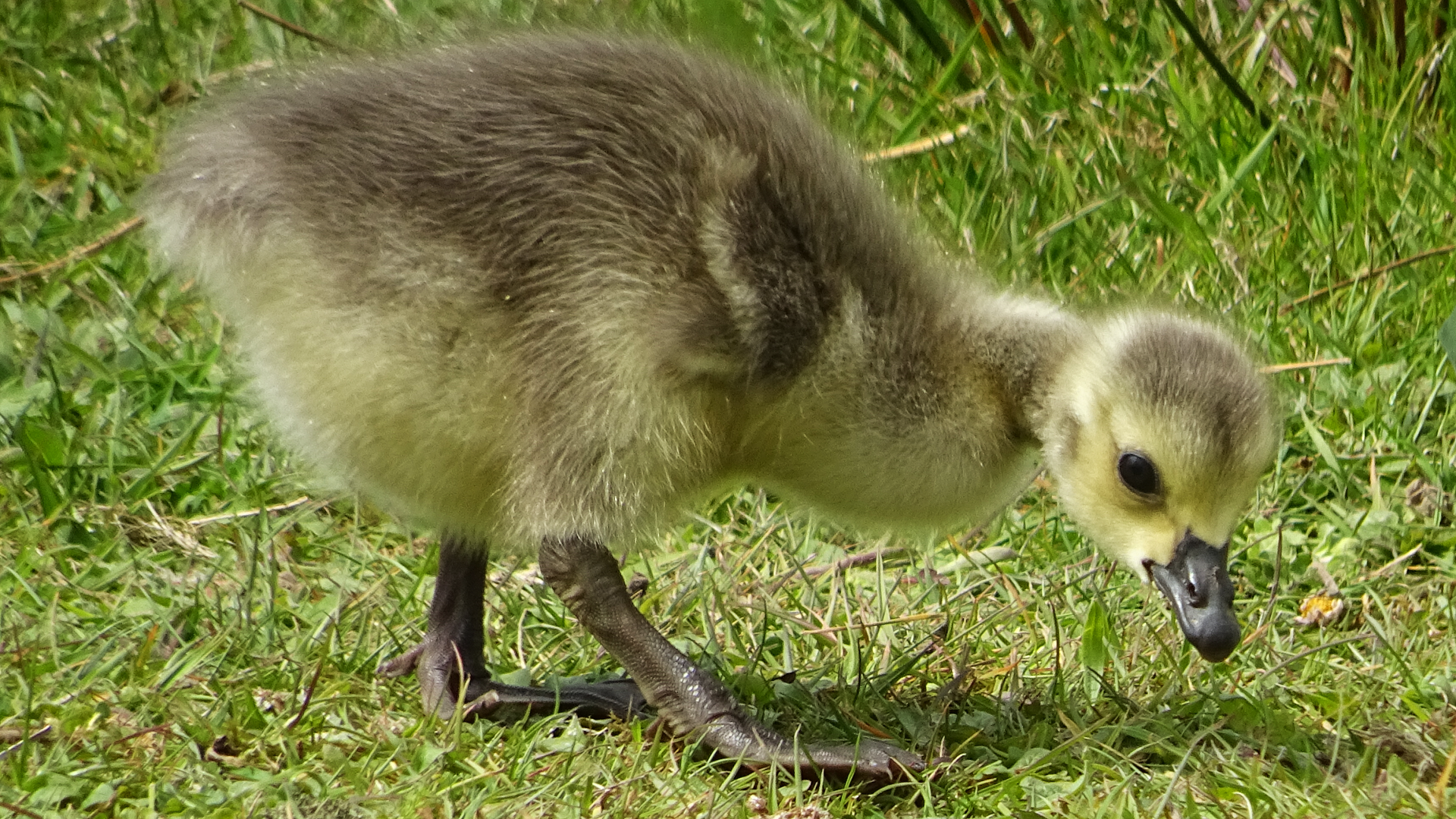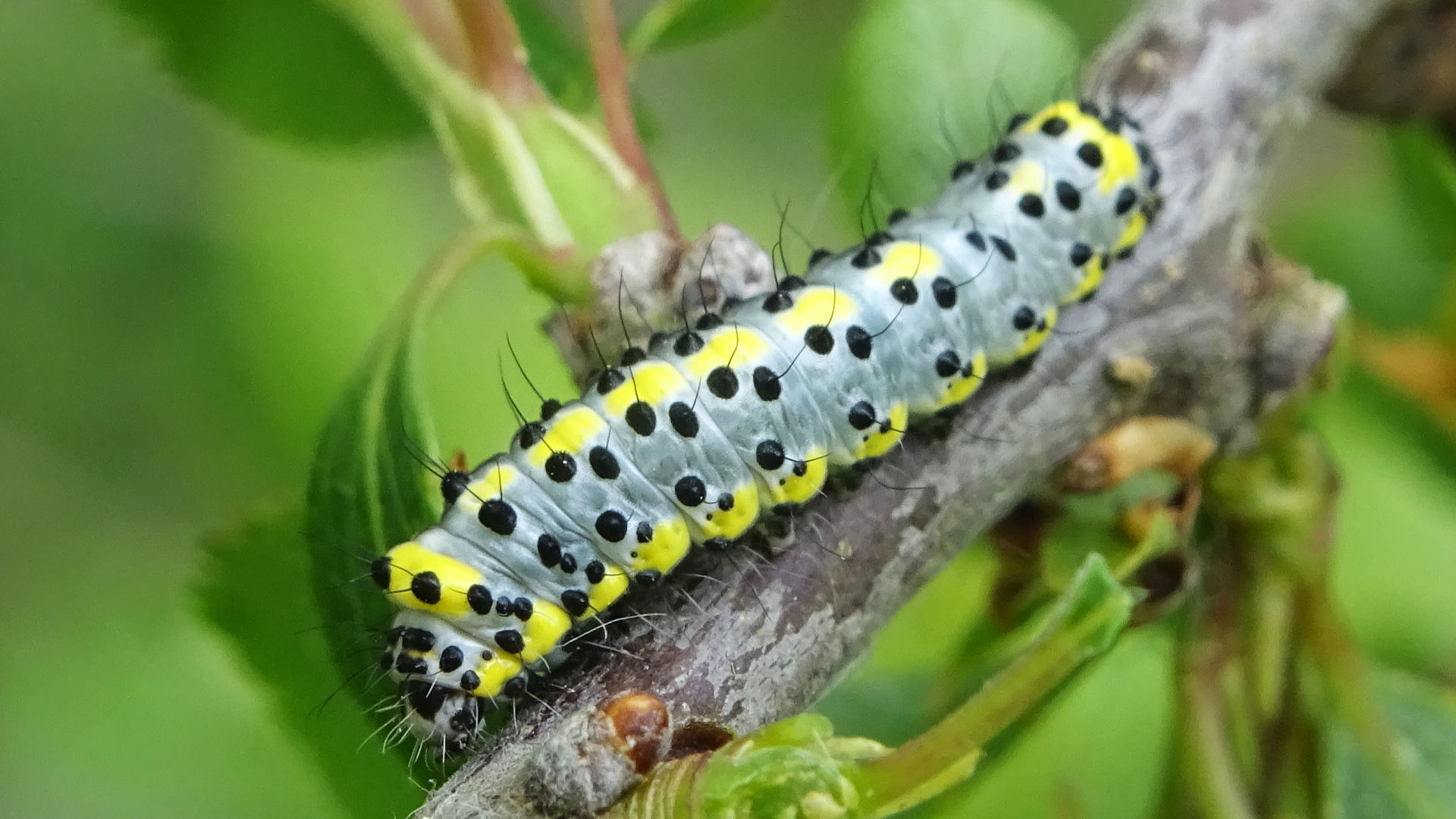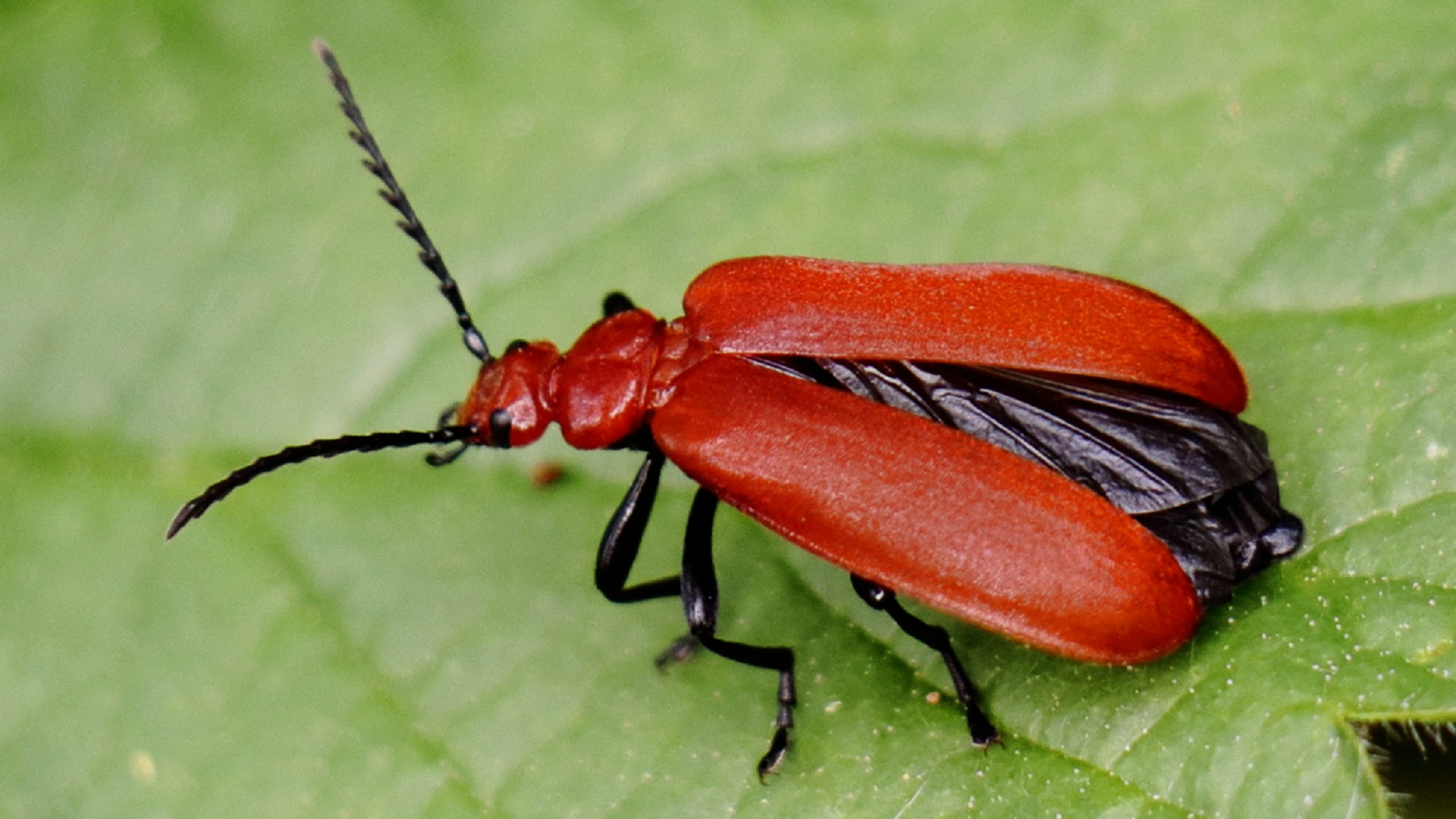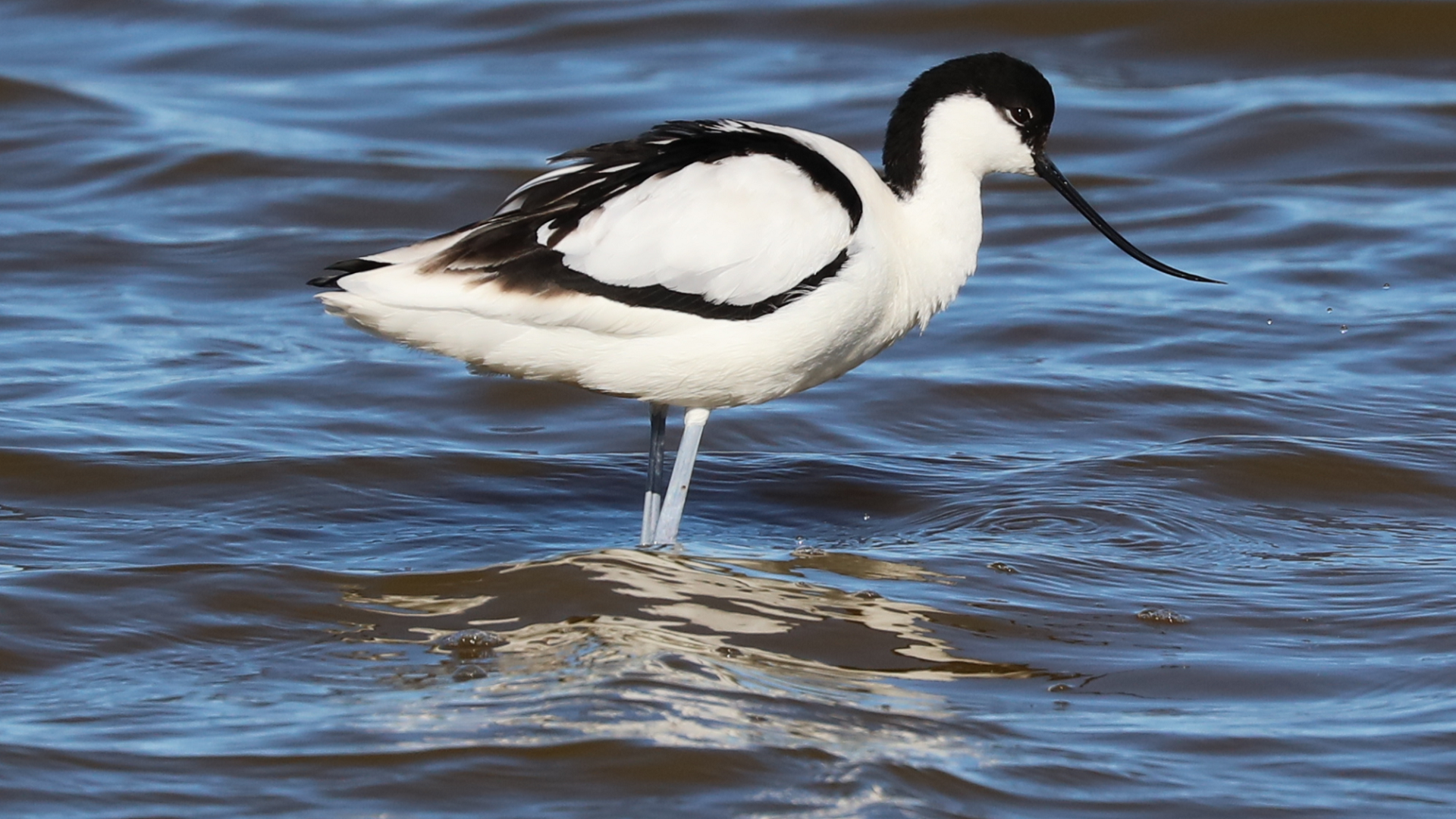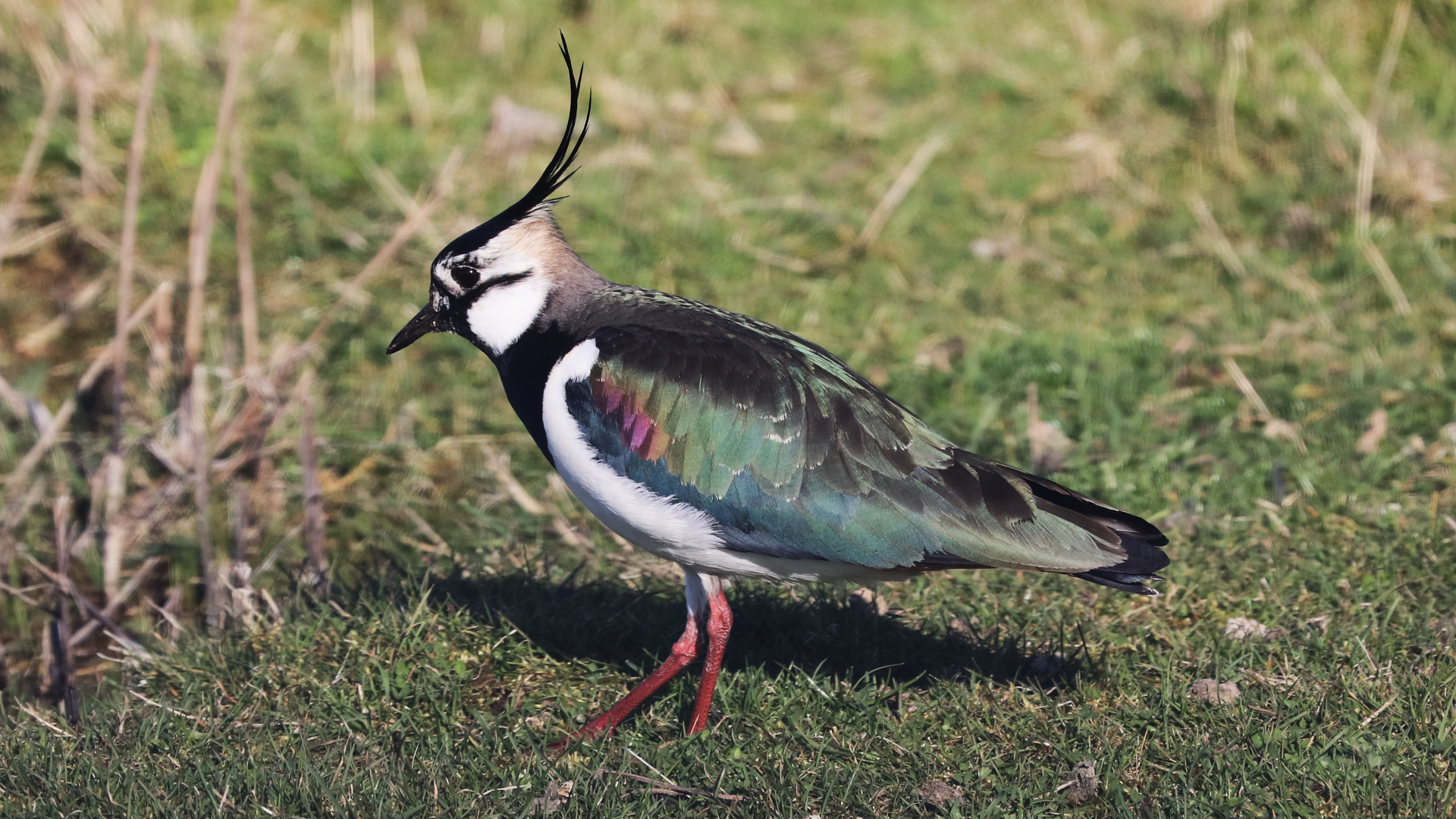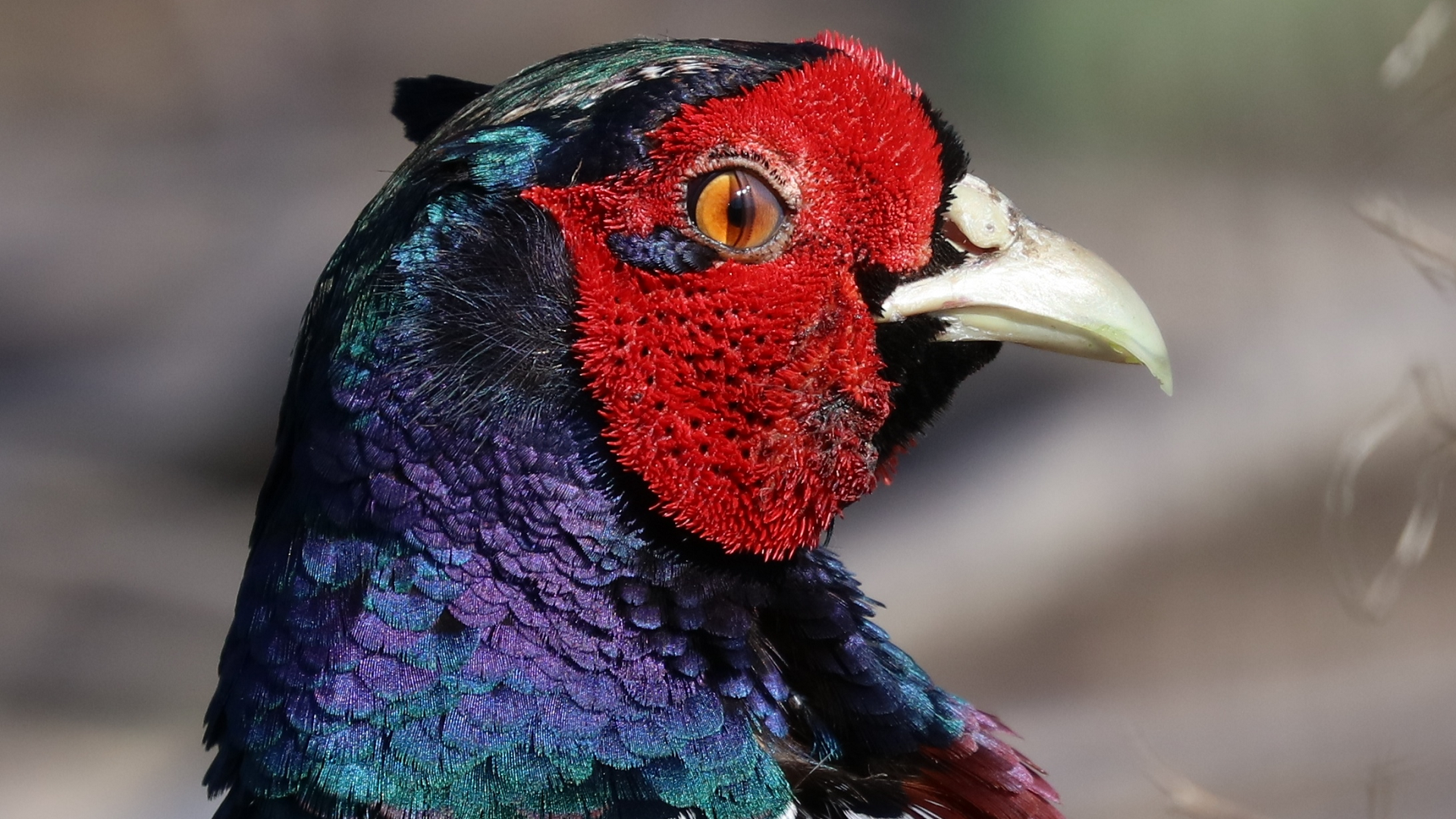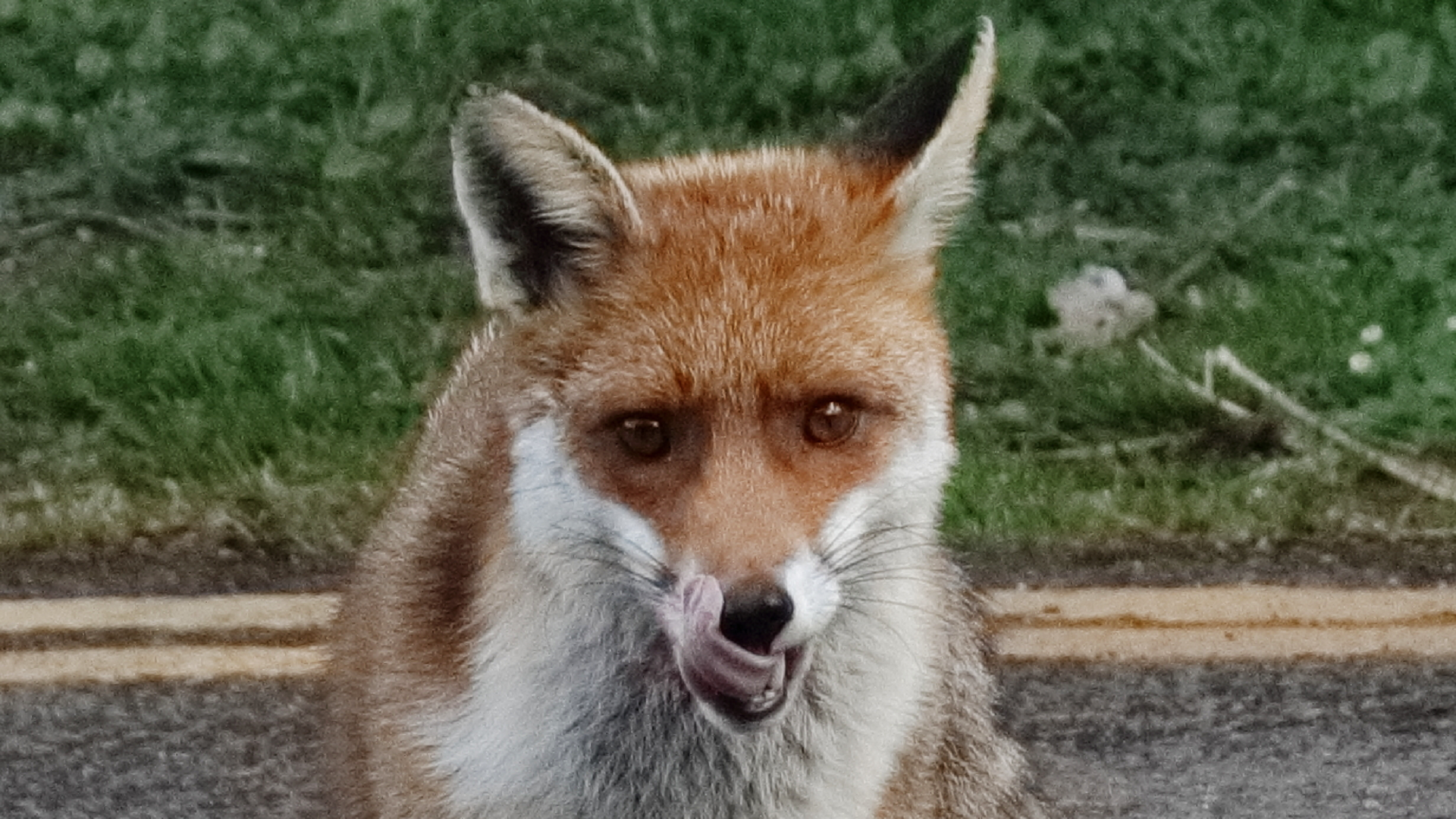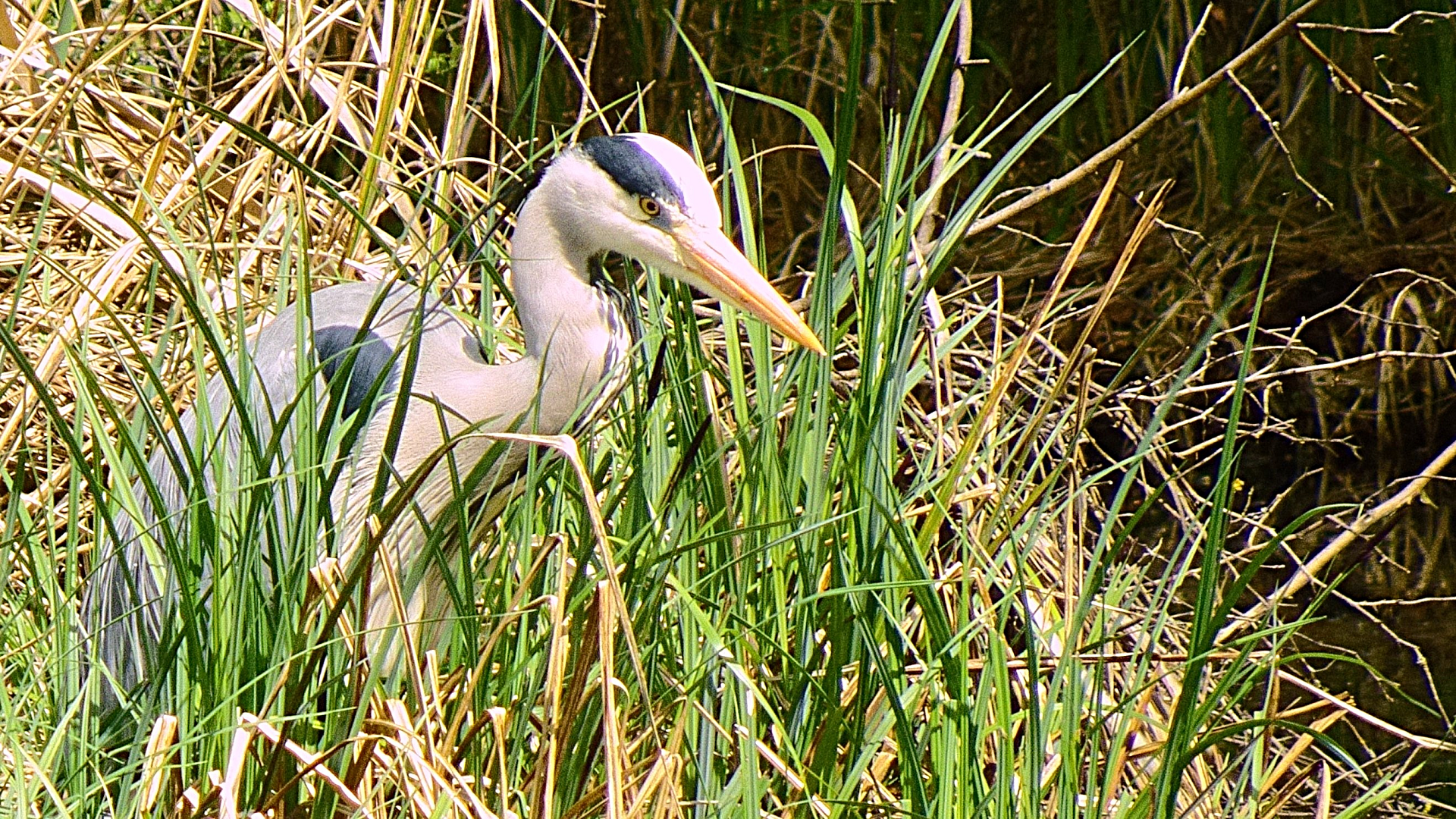APRIL 2025
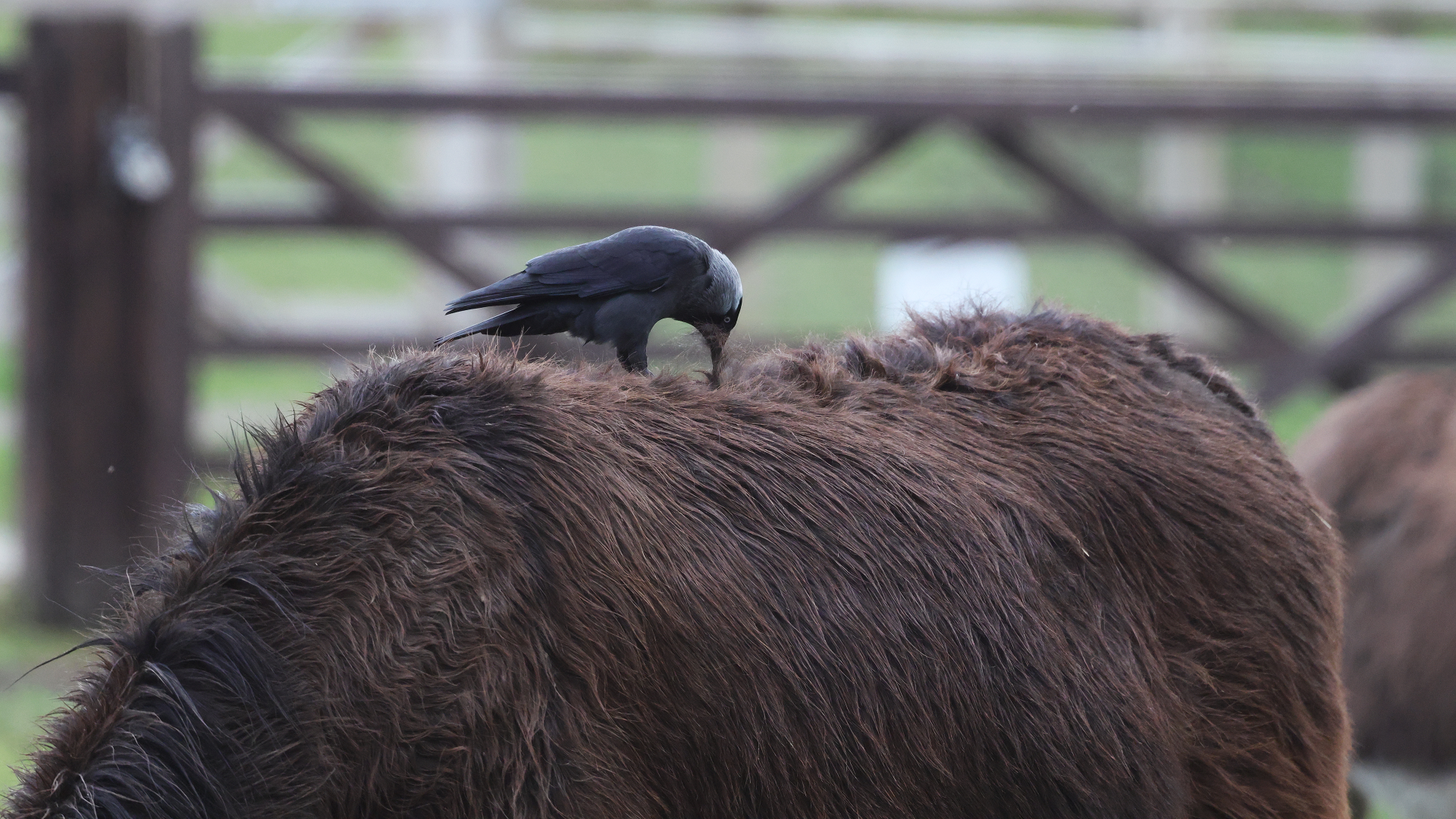
In spring many birds' thoughts turn to nest building and they start gathering materials...
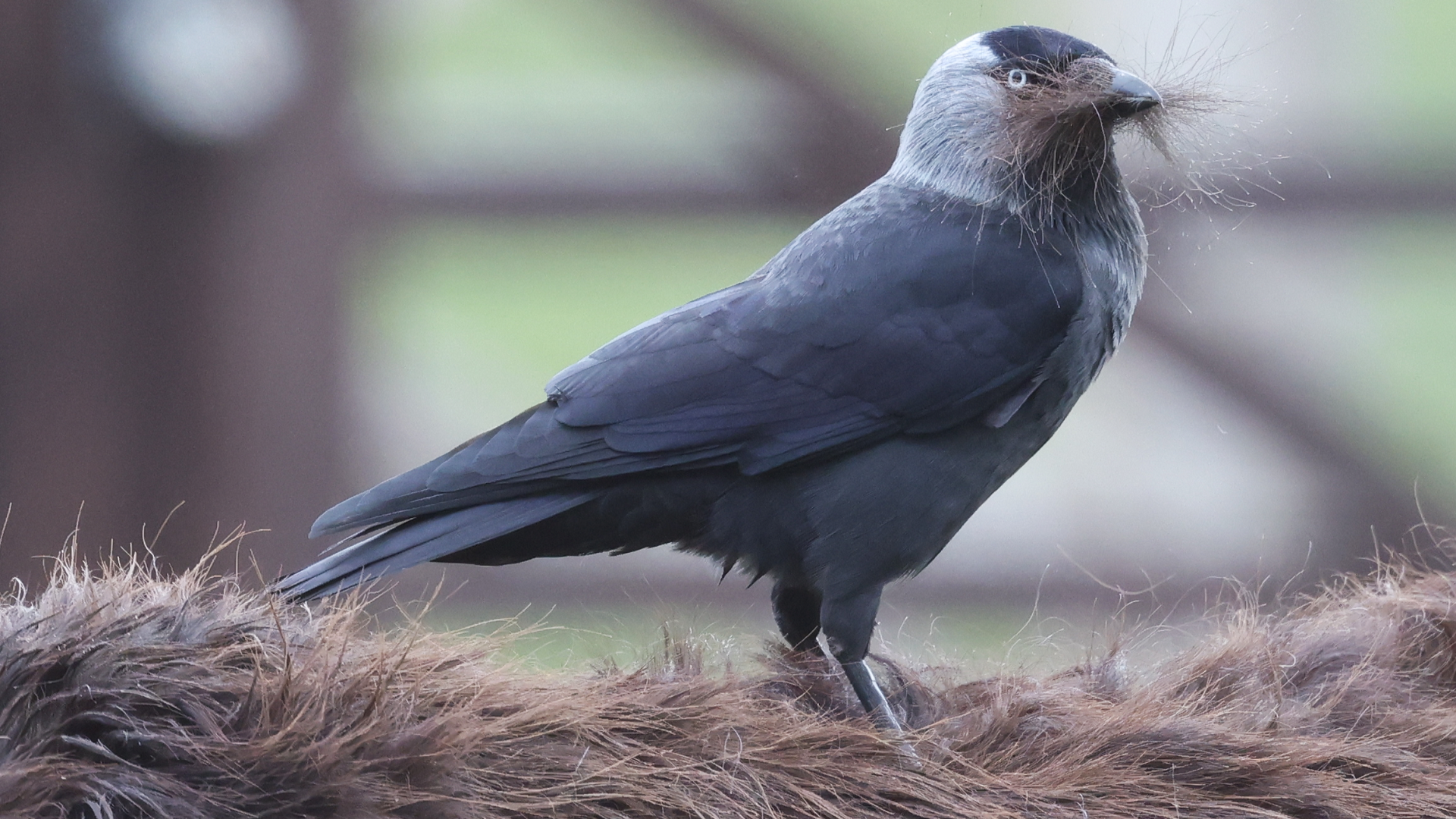
...but this Jackdaw at Foxburrow Farm just wanted a moustache!
Weasel
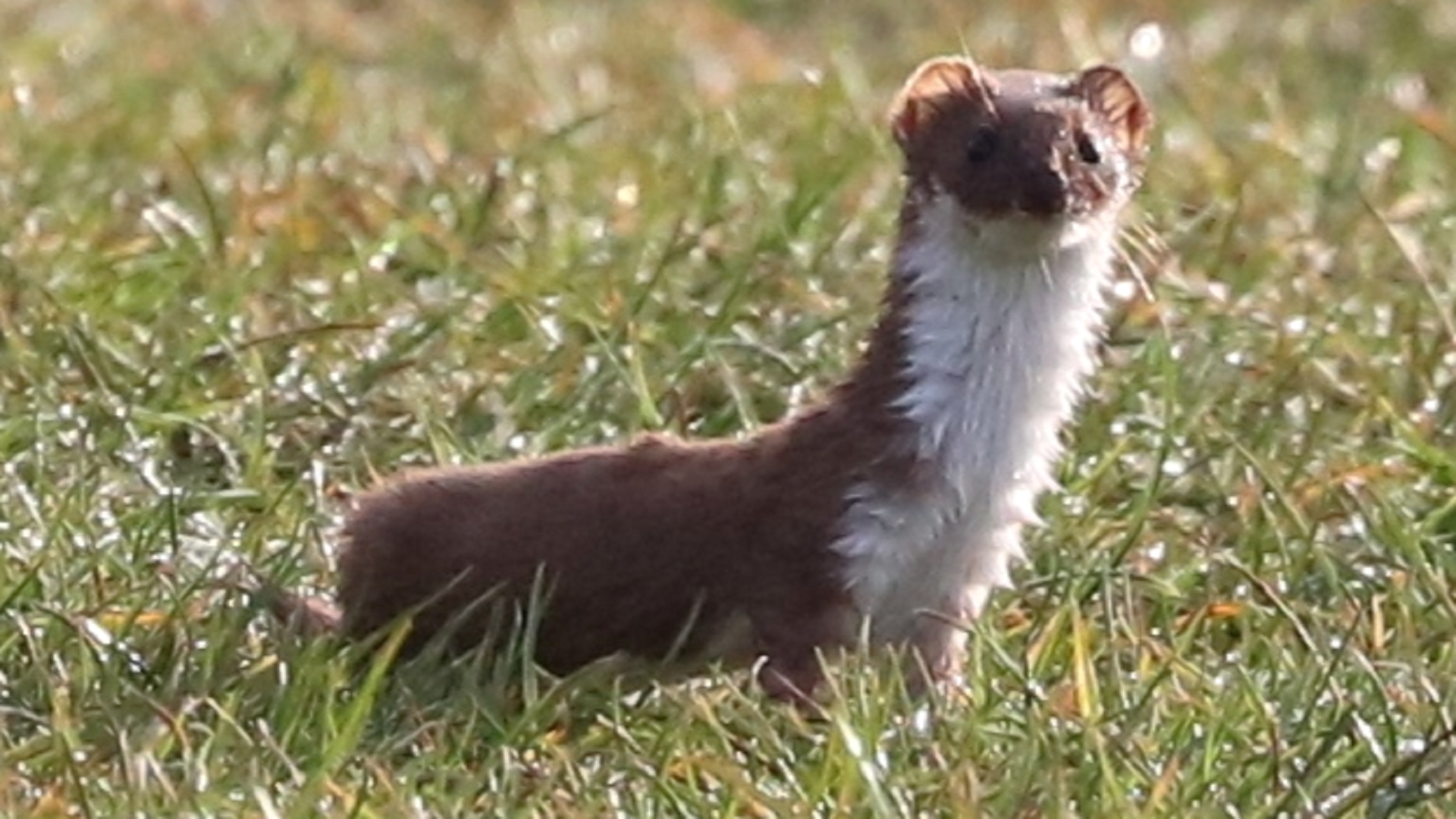
Spotted on the path at the top of Millennium Hill. Weasels are up to 25cm in length. They are similar to Stoats, but the Stoat has a black-tipped tail and is larger, measuring up to 40cm long.
Grass Snake
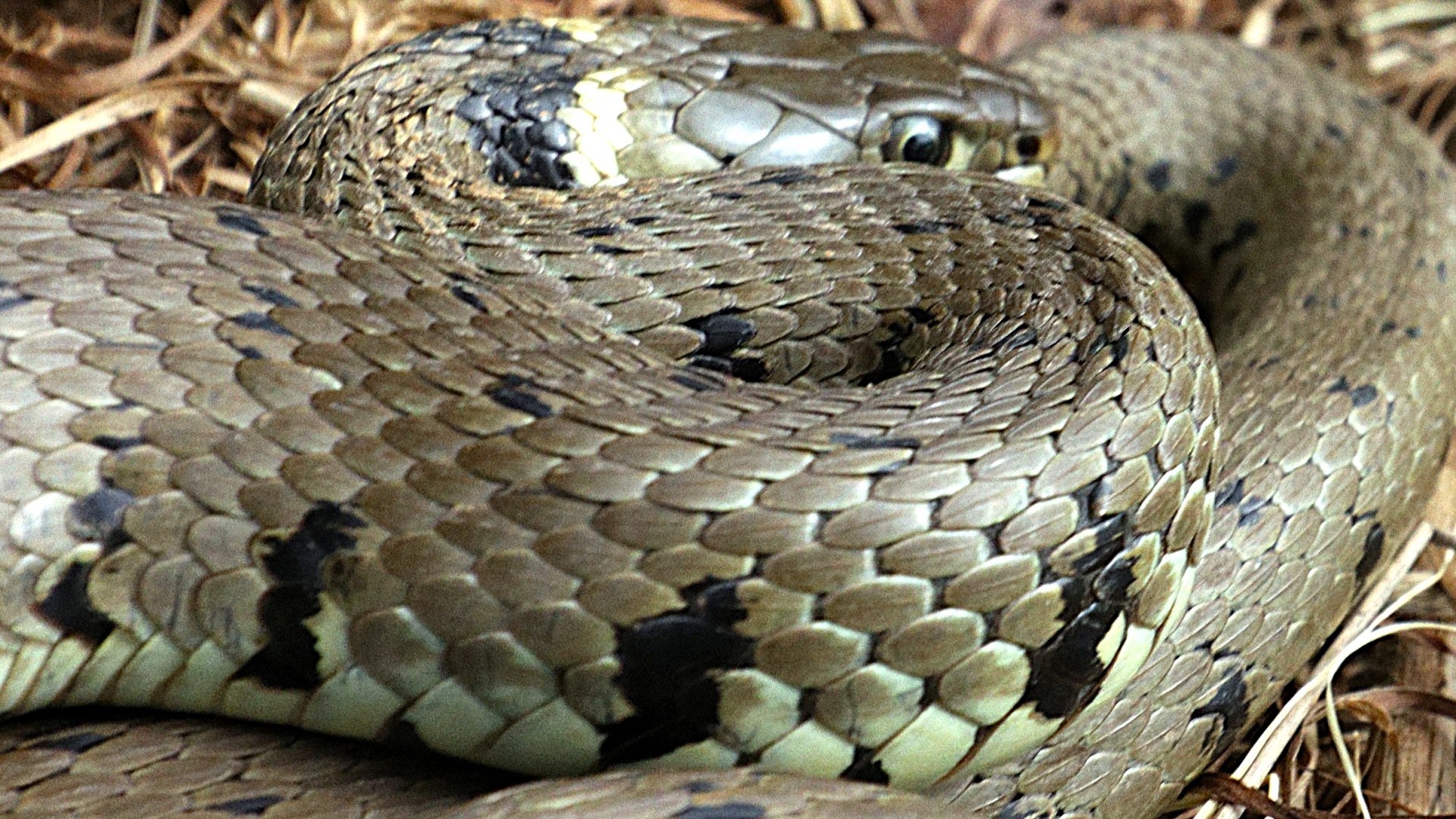
The Grass Snake population is Hainault Forest is on the increase. Mike has been visiting the forest for several decades and had never seen one here until about two years ago. Since then he has seen quite a few.
Skylark

Skylarks were becoming harder to find in Hainault Forest until the introduction of scrub on Millennium Hill. Now they can often be heard singing loudly on sunny days. The fenced-off area has played an important part in the Skylark's revival and it's a shame that some visitors can't be bothered to heed the signs.
Chiffchaff
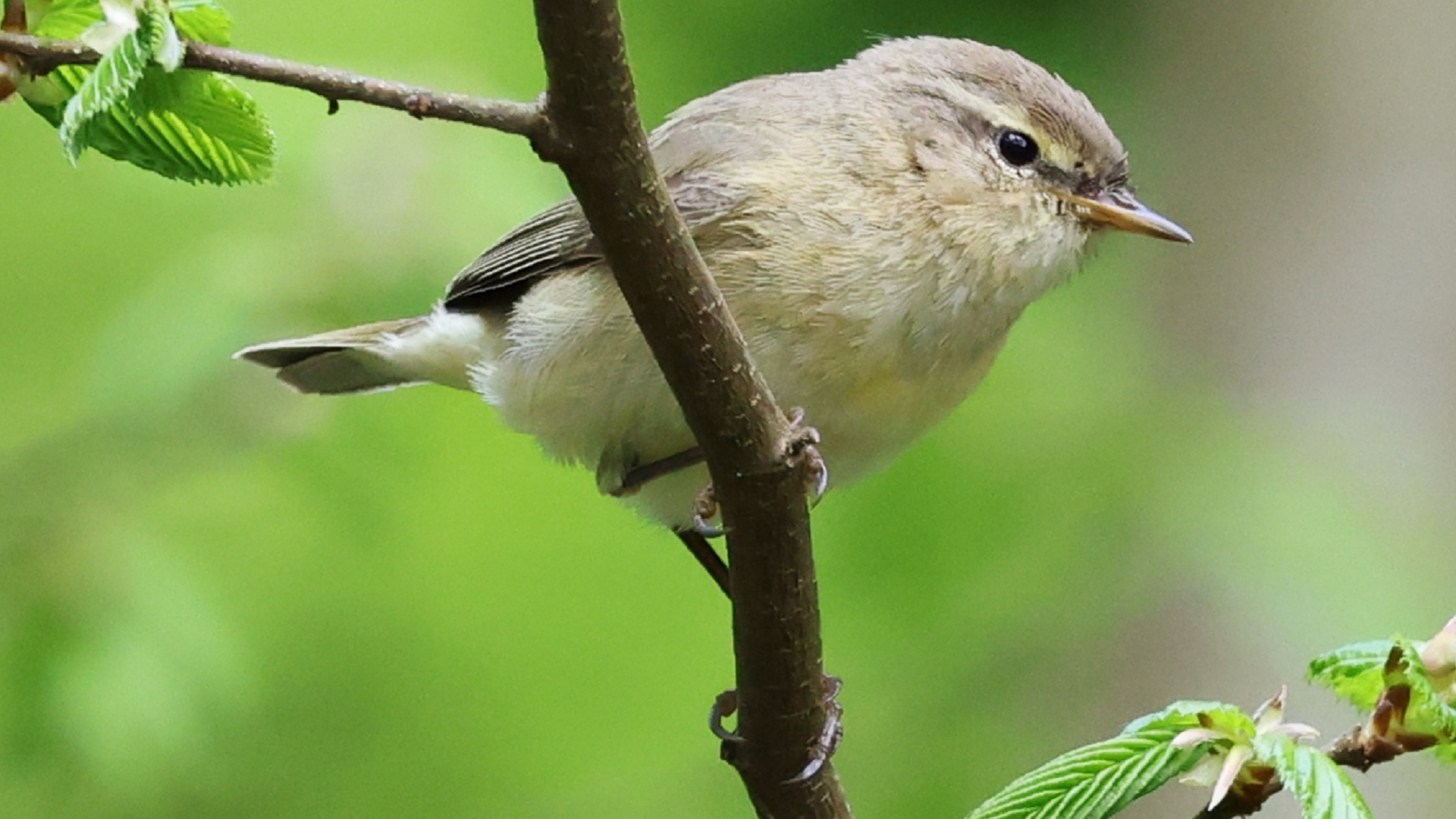
Chiffchaffs and Willow Warblers can be difficult to tell apart, but the Chiffchaff usually has dark legs. The Chiffchaff also has a distinctive call: "Chiff-chaff Chiff-chaff Chiff-chaff."
Blue Tit

Blue Tits feed on insects, larvae, nuts and seeds. Their favoured habitat is broad-leaved woodland, but they readily adapt to a variety of other habitats. They rarely move far from where they hatched.
Chaffinch
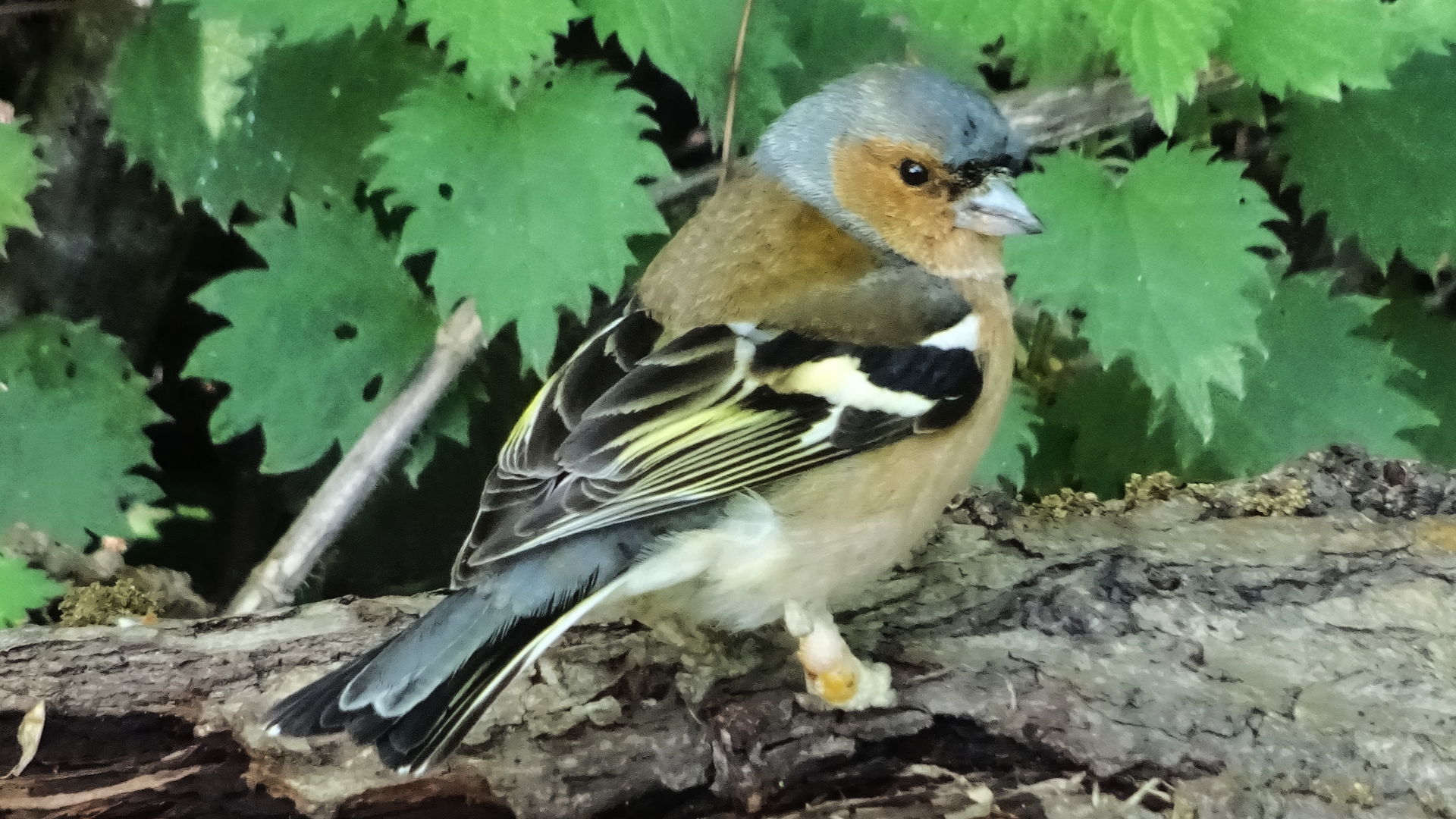
Chaffinches are found in woods, scrub and hedgerows. A white shoulder-patch is useful when identifying this species. Males have deeper colouration than females and the sexes can easily be told apart. They feed on insects and seeds.
Grey Heron
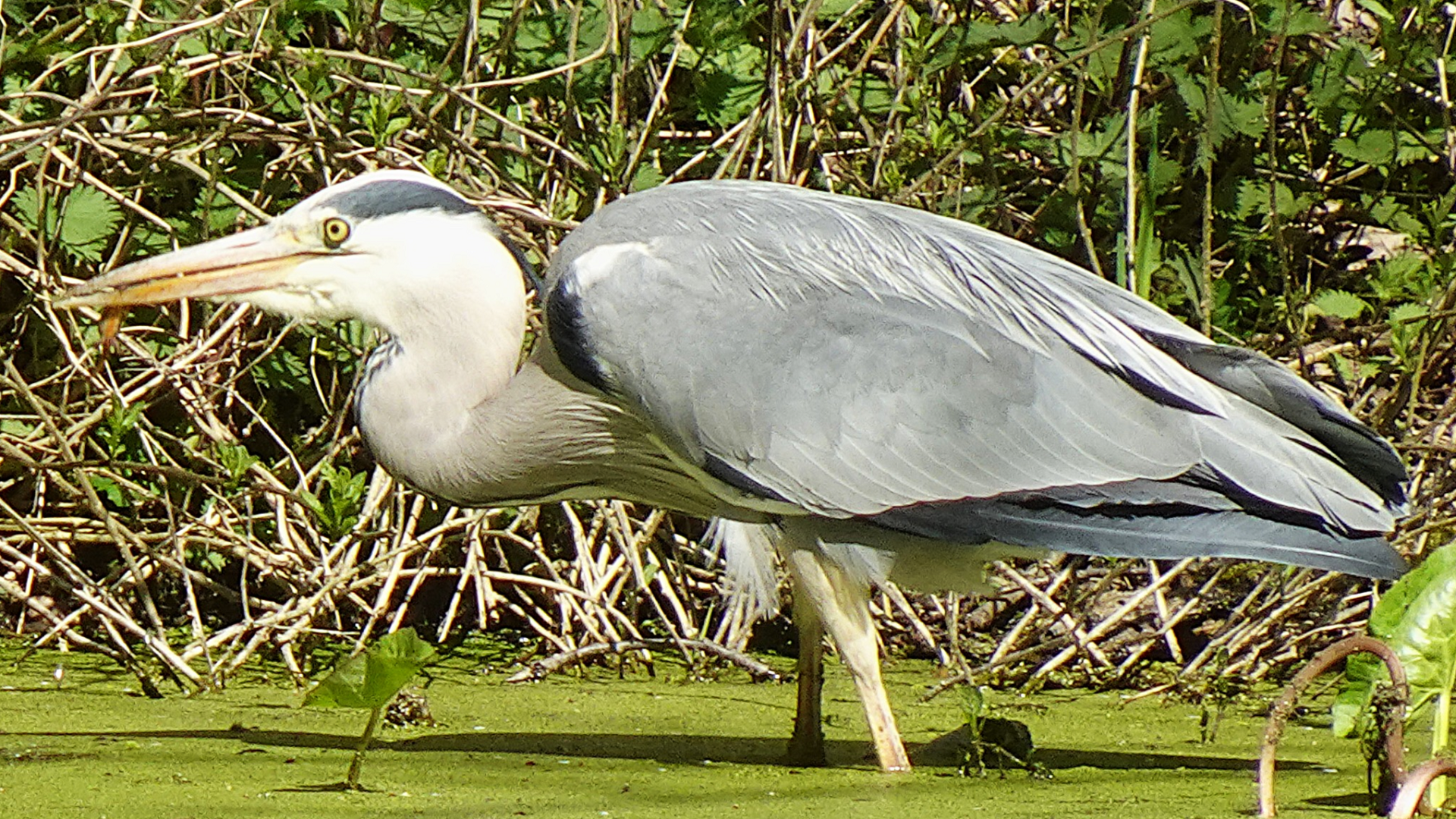
A Grey Heron at Sheepwater with a newt in its bill.
Emperor Moth
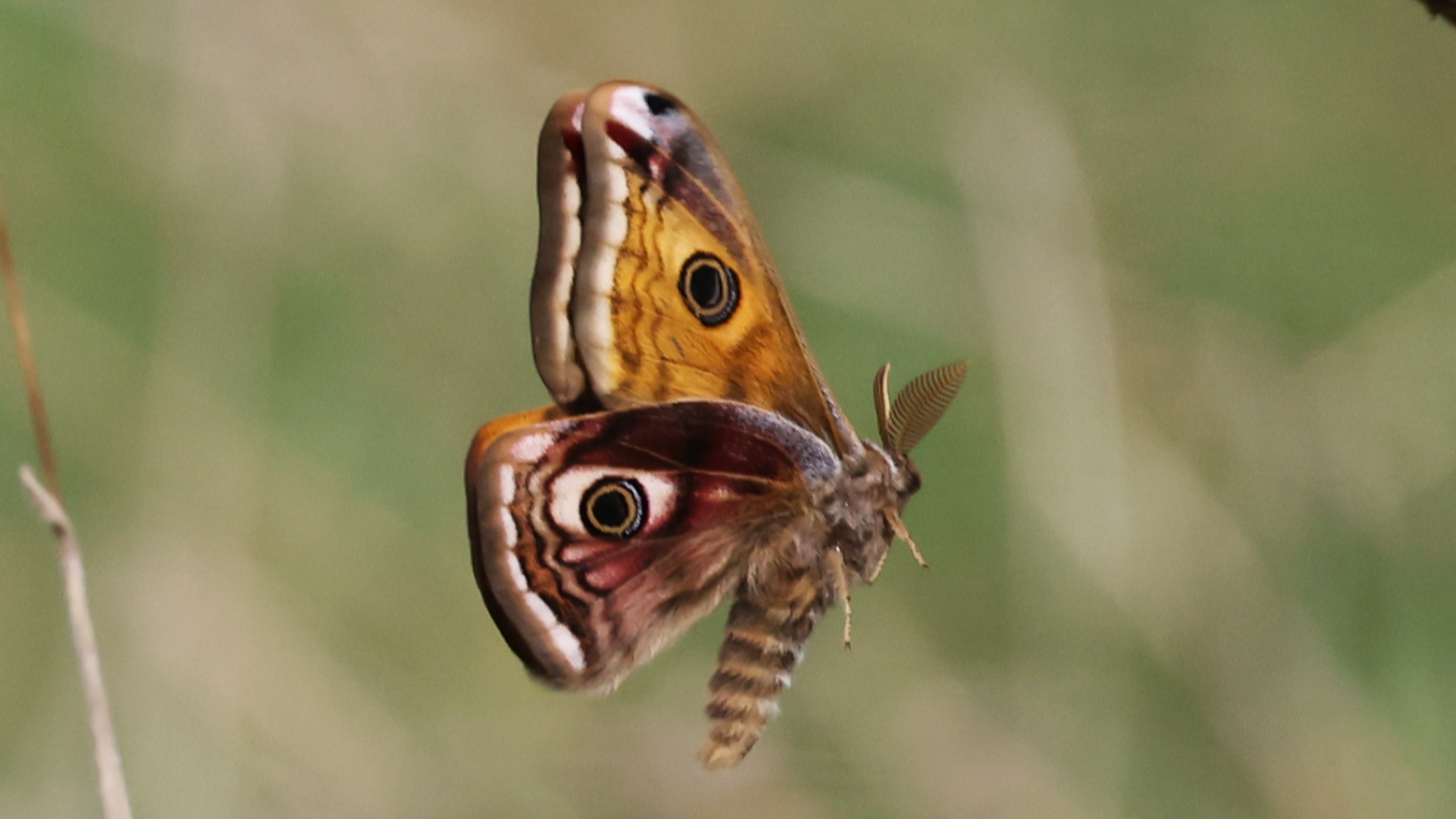
When it comes to beauty the Emperor Moth
Saturnia pavonia reigns supreme. It is a widespread moth that frequents hedgerows, woodland and heathland, but is rarely seen. Males have bright orange hindwings and fly during the day. The slightly larger females are greyer and fly at night. This species is on the wing during April and May.

Britain's only resident member of the Saturniidae family feeds on foodplants such as bramble, blackthorn, hawthorn and heather.
Light Orange Underwing
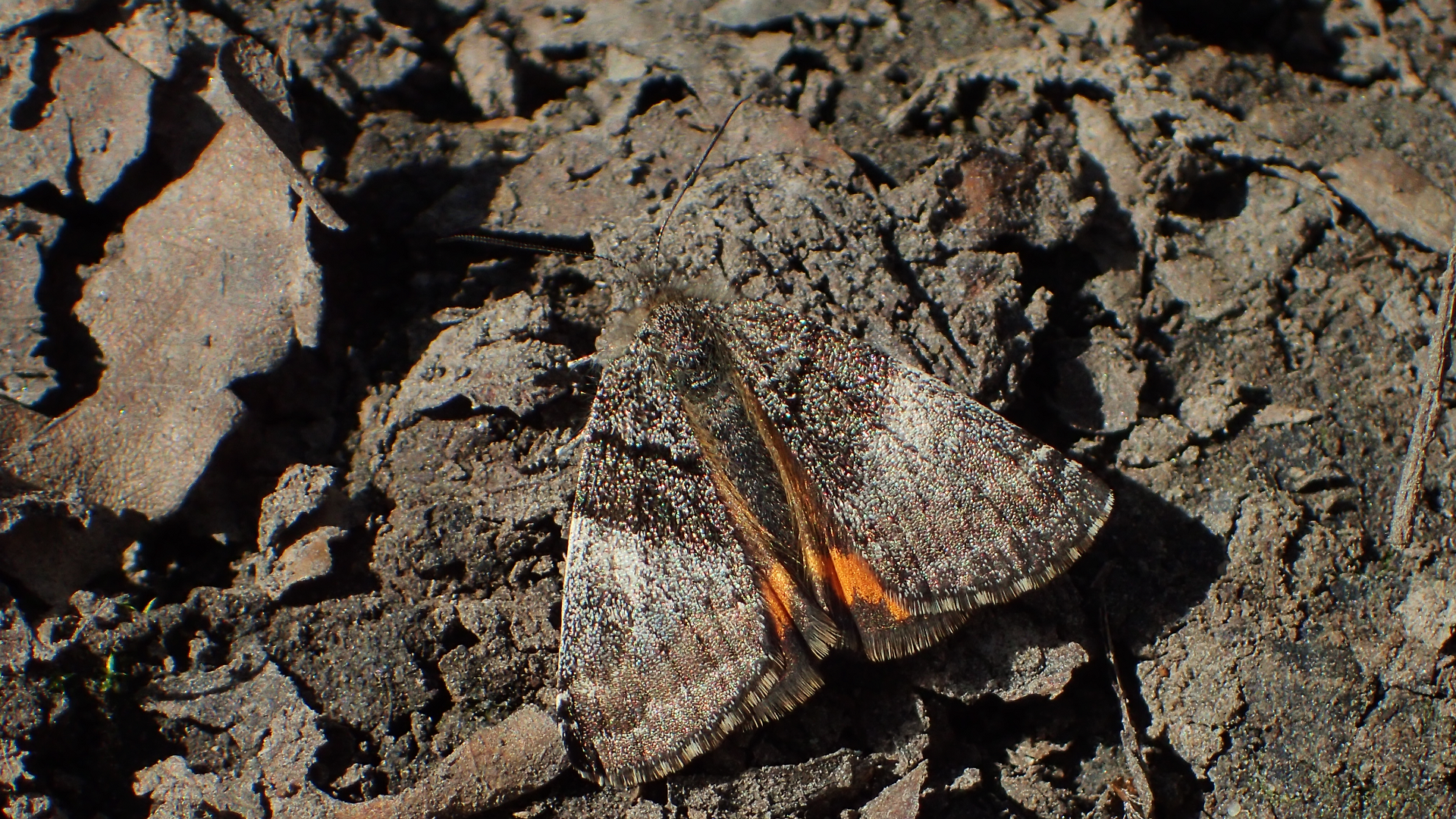
This day-flying moth was spotted on a path at the back of Hainault Lake by Simon. He thought it was a Light Orange Underwing Archiearis notha, a view shared by Essex Field Club specialist Rob Smith, who suggested it was a very strong candidate for being a female based on markings and wing shape. The Orange Underwing and Light Orange Underwing are two very similar species that can only be told apart by examining the hindwing underside. Although not able to confirm this identification, Light Orange Underwing seemed very plausible.
Green Longhorn
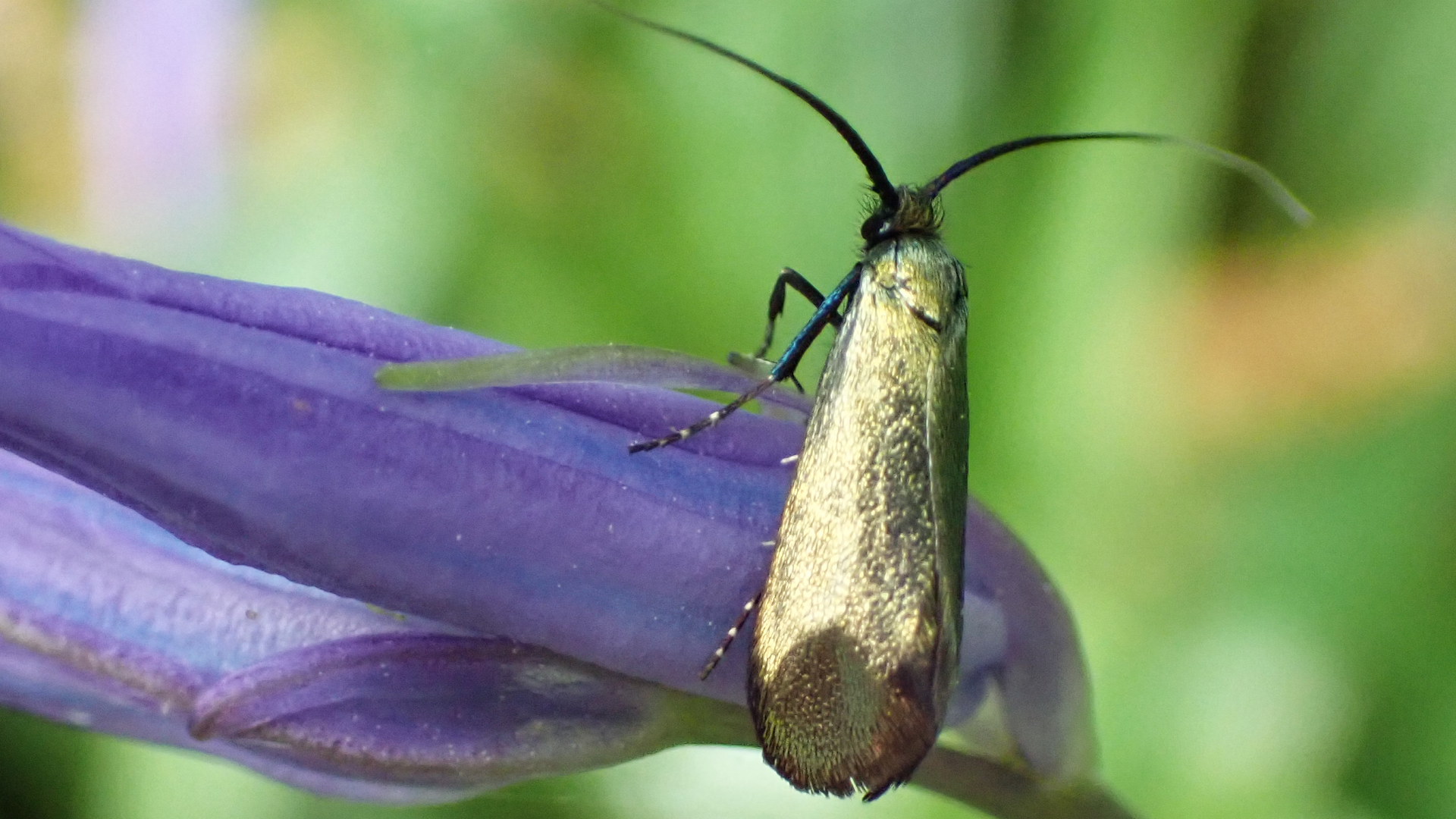
Green Longhorn Adela reaumurella is a species of day-flying moths that flies from April to June. On sunny days the males are often seen in swarms over hedgerows in the forest. Males have long, whitish antennae, whereas those of females (above) are shorter. The forewings are bronzy or metallic green.
Figure of Eight
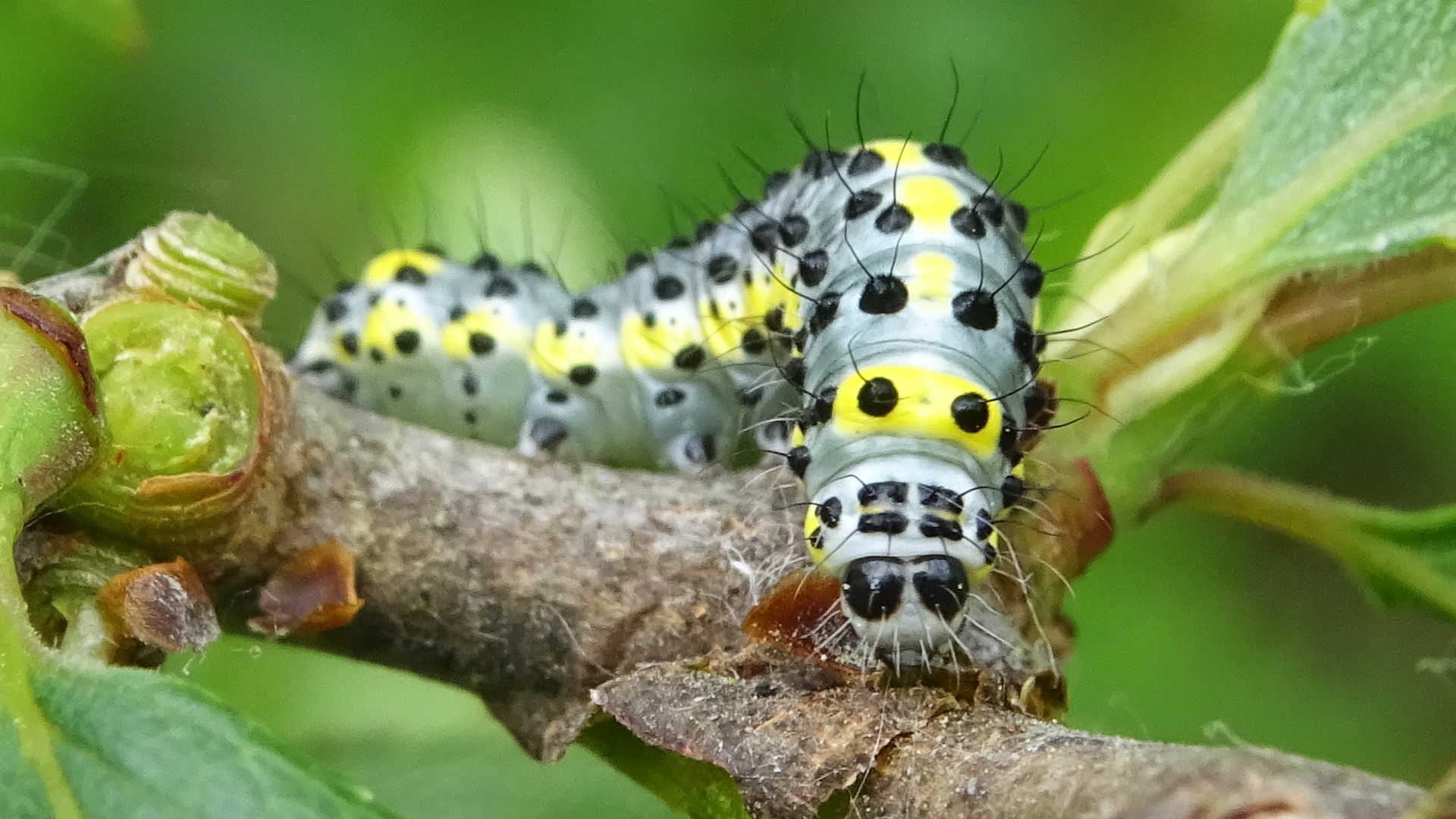
A Figure of Eight Diloba caeruleocephala caterpillar (10mm) on blackthorn. The adult moths have a characteristic '8' marking on the forewing and usually fly from September until November.
Orange-tip
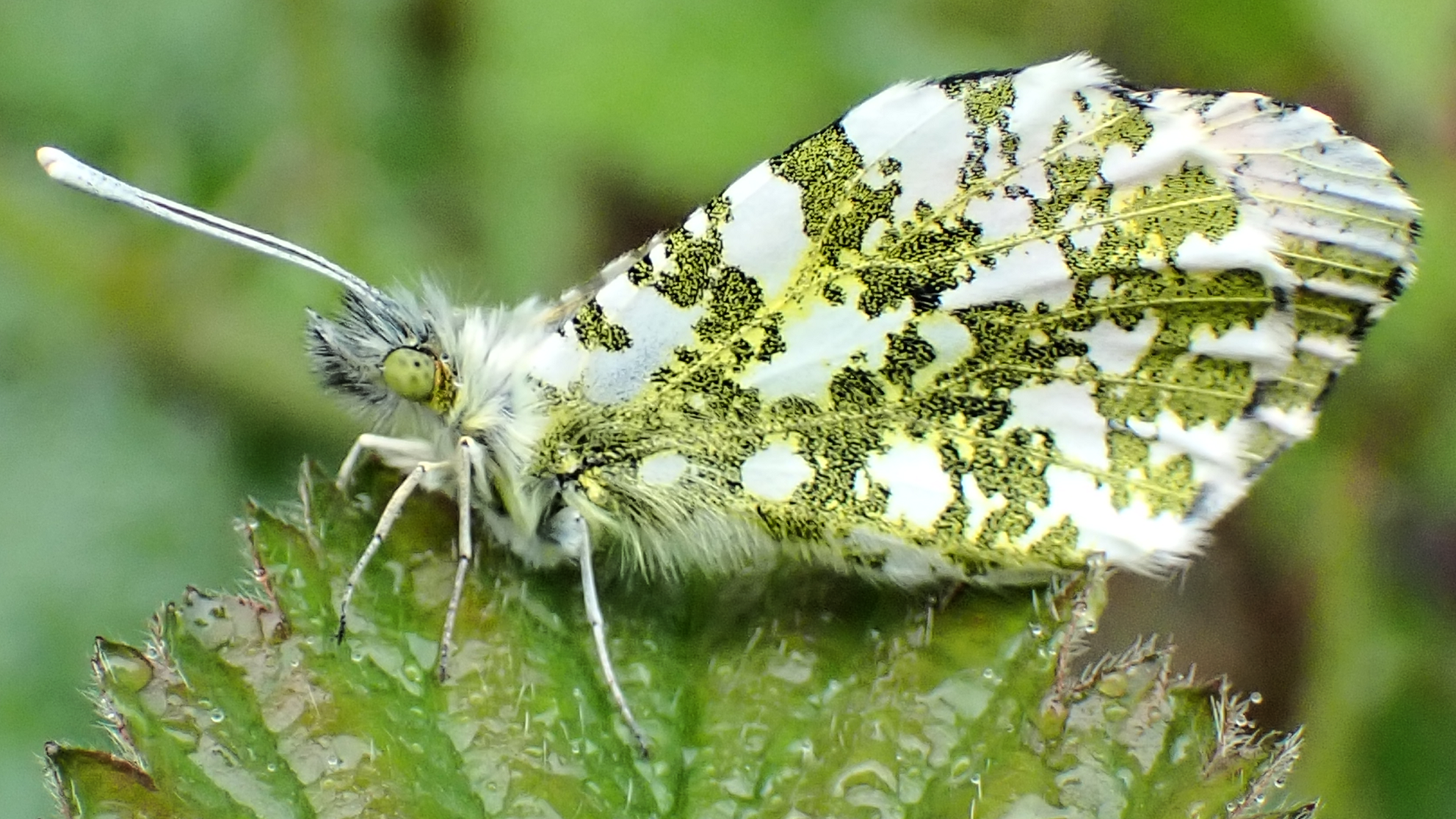
An Orange-tip butterfly Anthocharis cardamines at rest on bramble. Both sexes have mottled green underwings. Only males have orange wing tips that are visible when the wings are open. Females have black wing tips. This is a male.
Speckled Wood
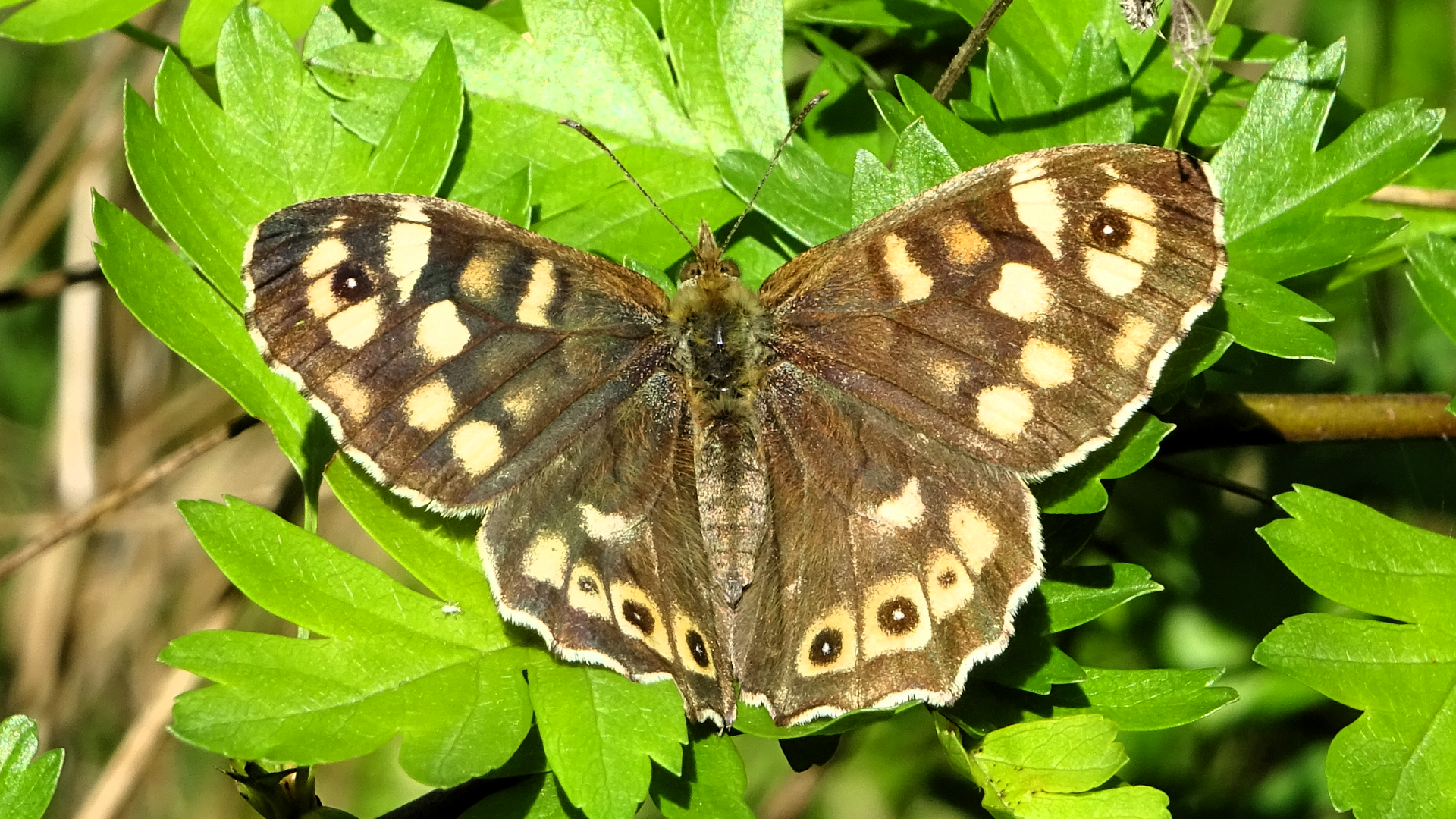
Speckled Wood Pararge aegeria is a common woodland butterfly often seen resting on bramble along woodland paths. Males normally bask in sunlight and chase away trespassers encroaching on their territory. Both sexes visit tree tops to feed on honeydew made by aphids. This species rarely visits flowers to feed except early and late in the year when supplies of honeydew are low. The caterpillars feed on various grasses.
Dark-edged Bee Fly
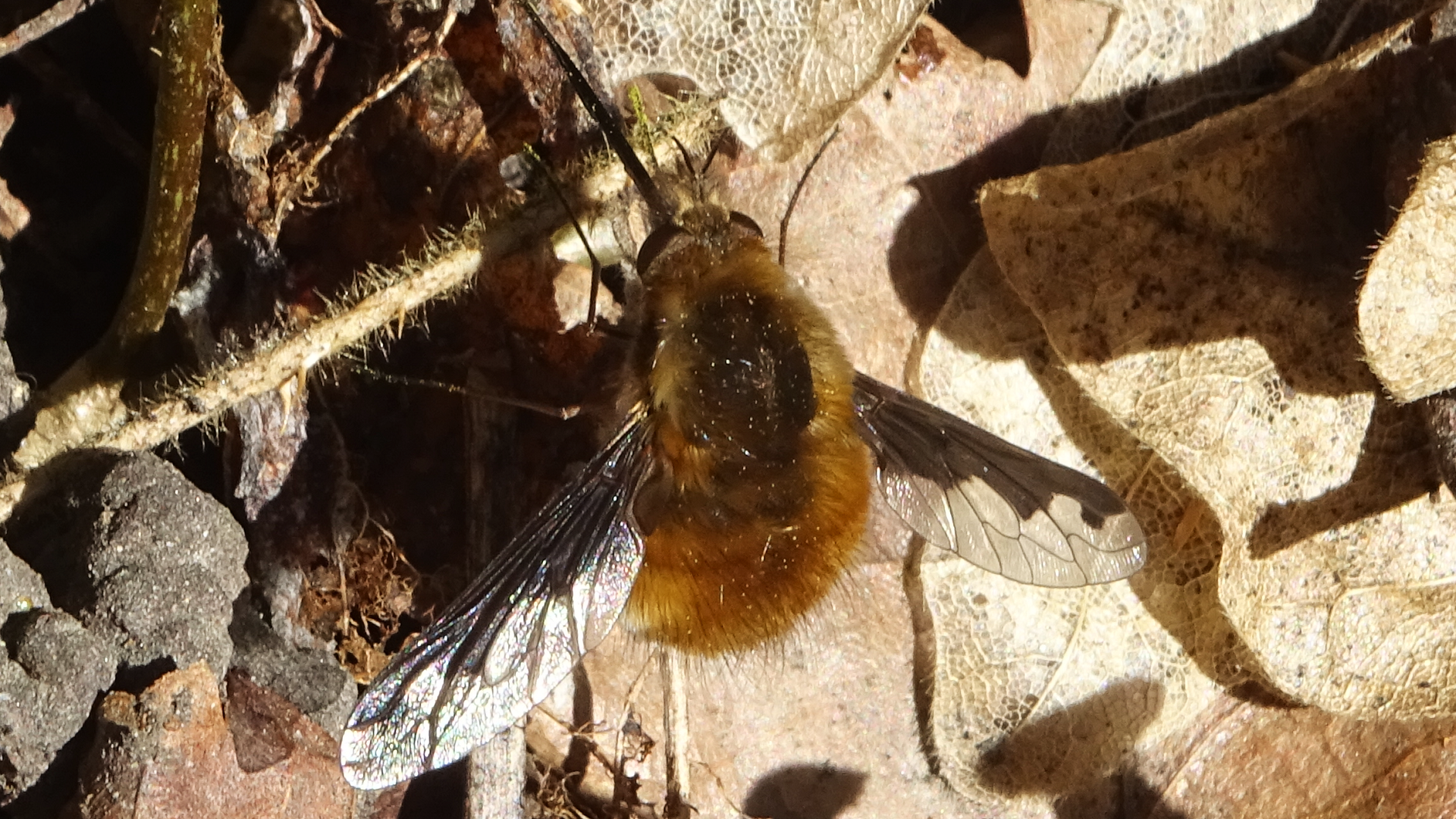
The Bee Fly Bombylius major is a harmless two-winged insect that resembles a small bumblebee about 12mm long. The long proboscis is used for drinking nectar and does not sting. This species is usually seen in spring resting on leaf litter or hovering above flowers. Its larvae eat bee and wasp larvae.
Braconid Wasp
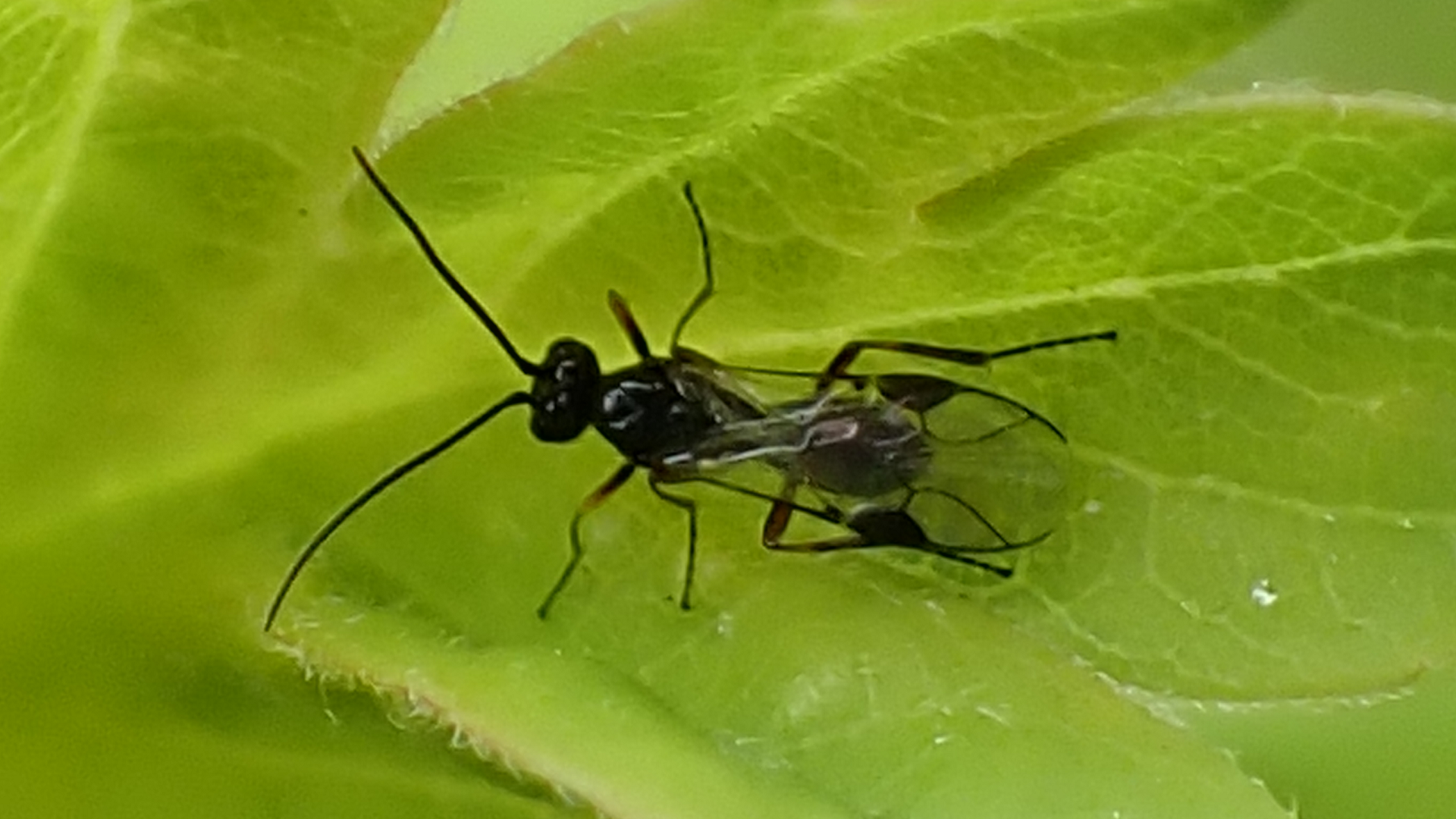
Braconid wasps
Eubazus
are parasitoids that play an important role in controlling insect populations by laying their eggs inside other insects. The larvae hatch and grow inside the host before chewing a small hole in the skin to emerge. Roughly 1,500 species of Braconid live in the UK. They do not sting humans.
Gorse Shieldbug
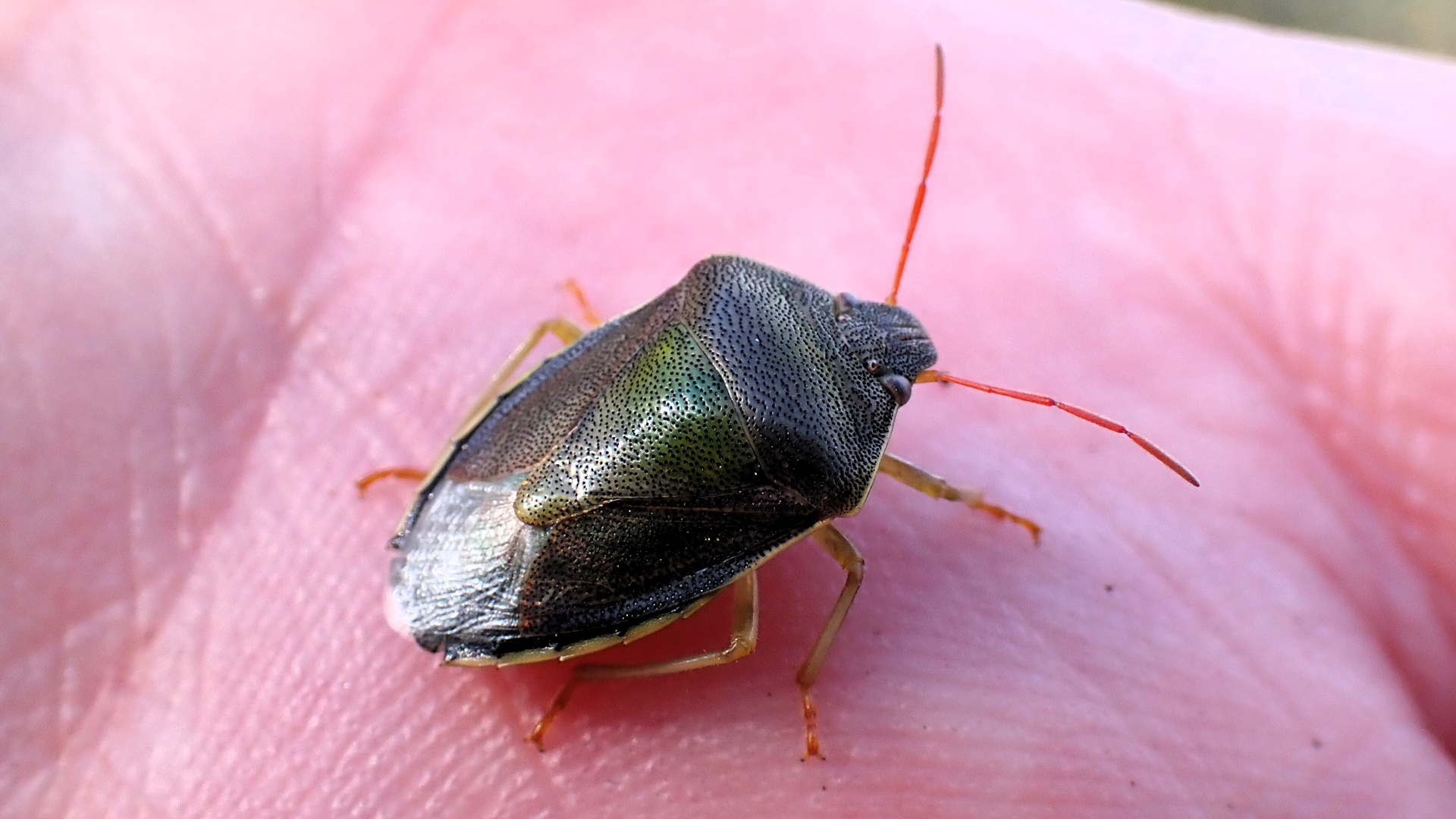
Gorse Shieldbugs Piezodorus lituratus (10-13mm) that emerge and mate during spring are mainly green. The new generation that appears late summer has purplish-red markings, becoming darker before hibernation. Mainly found where European gorse is present.
Ivy Planthopper
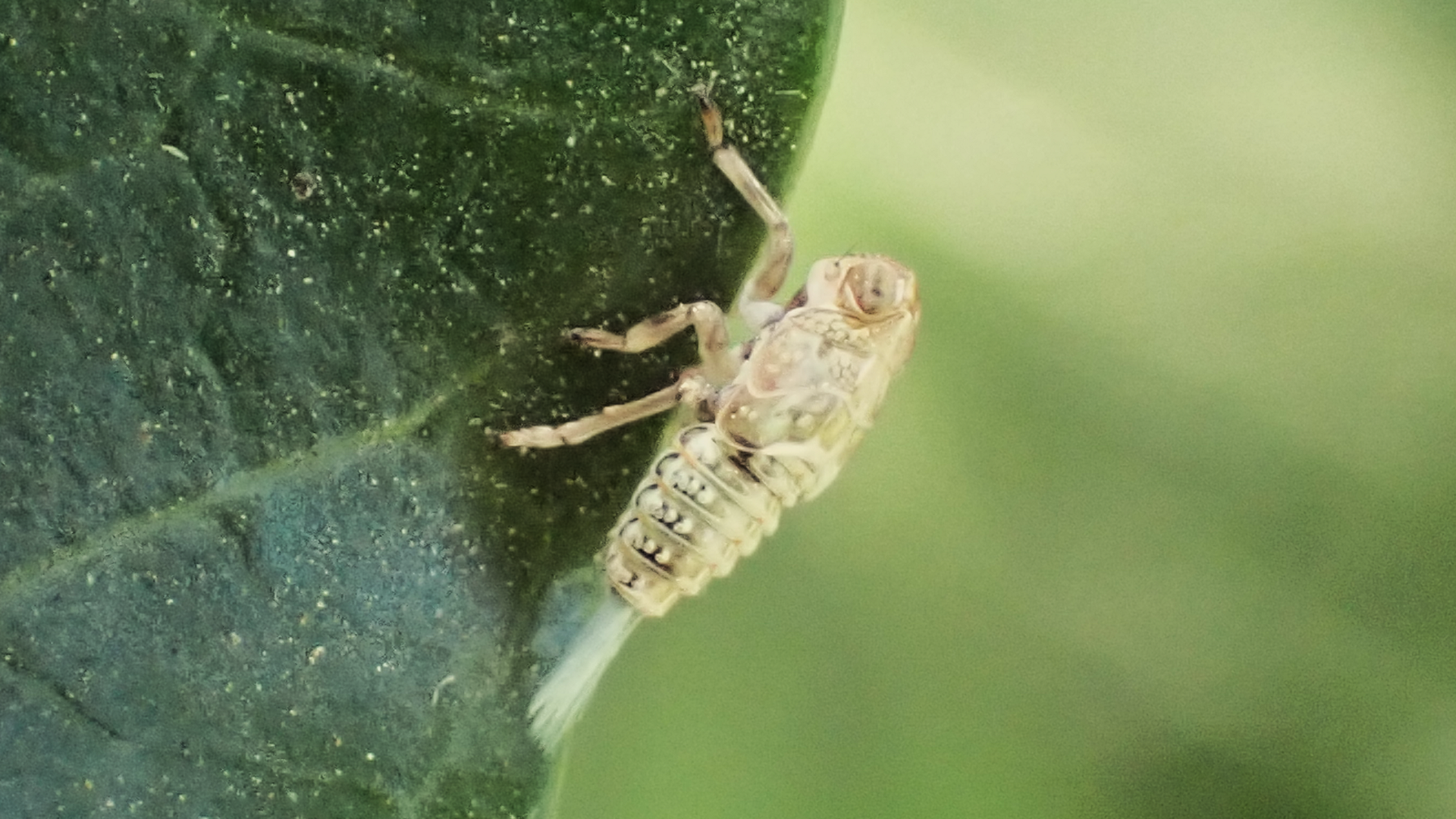
This planthopper nymph (2mm) is probably Issus coleoptratus, but identification cannot be 100% guaranteed without a clear view of the face. There is a rarer species, but records indicate it is restricted to western England. I. coleoptratus nymphs are interesting because this-insect-has-the-only-mechanical-gears-ever-found-in-nature [Smithsonian]. This is an external link with no connection to this website.
Cherry Laurel
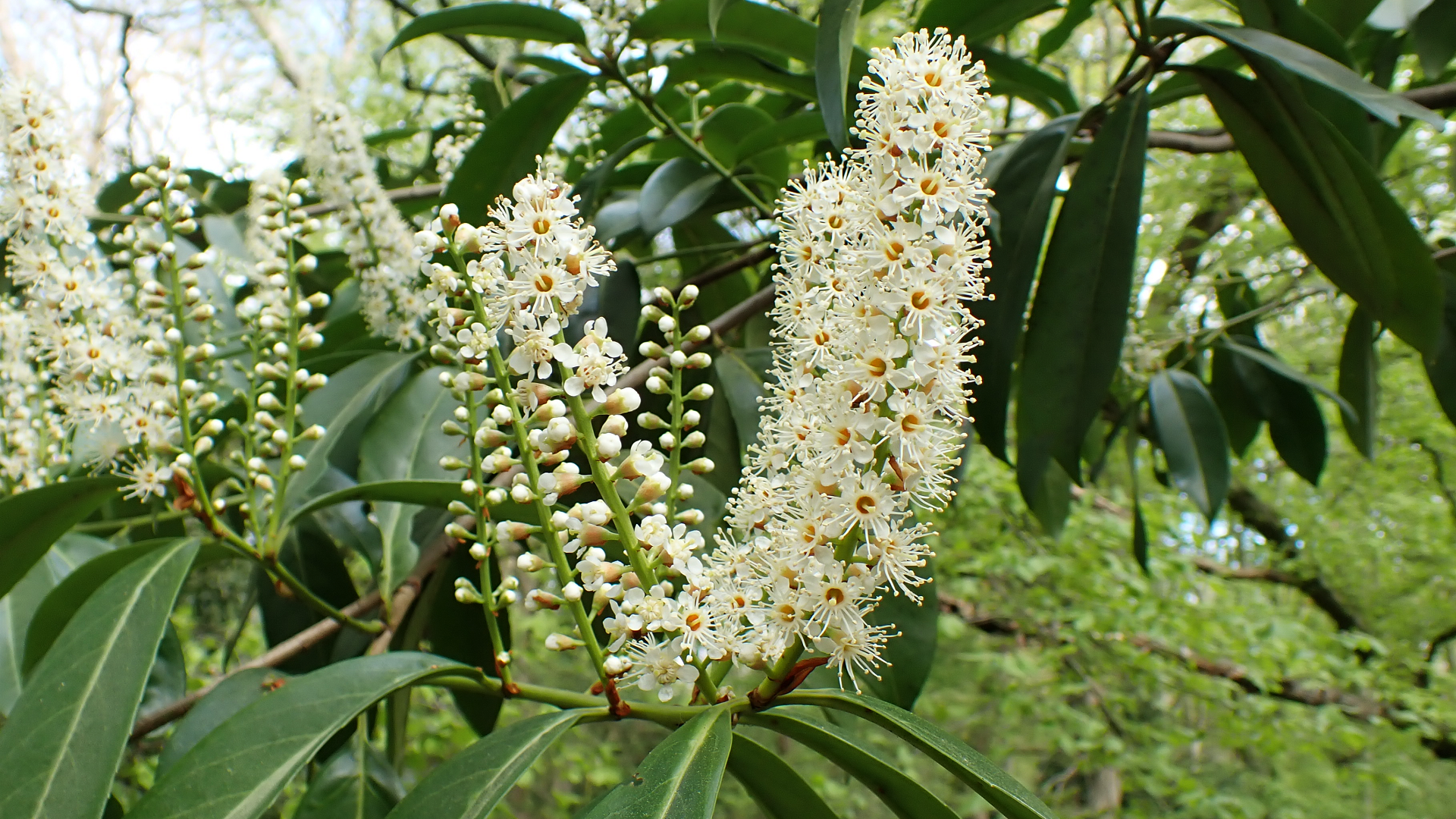
Cherry Laurel
Prunus laurocerasus is an ornamental plant. It has large glossy, toothless, evergreen leaves and white flower spikes that fully open in April. Bitter black berries appear in autumn. This species was introduced to Britain in 1576. Found by the path leading to Roes Well.
Cowslip
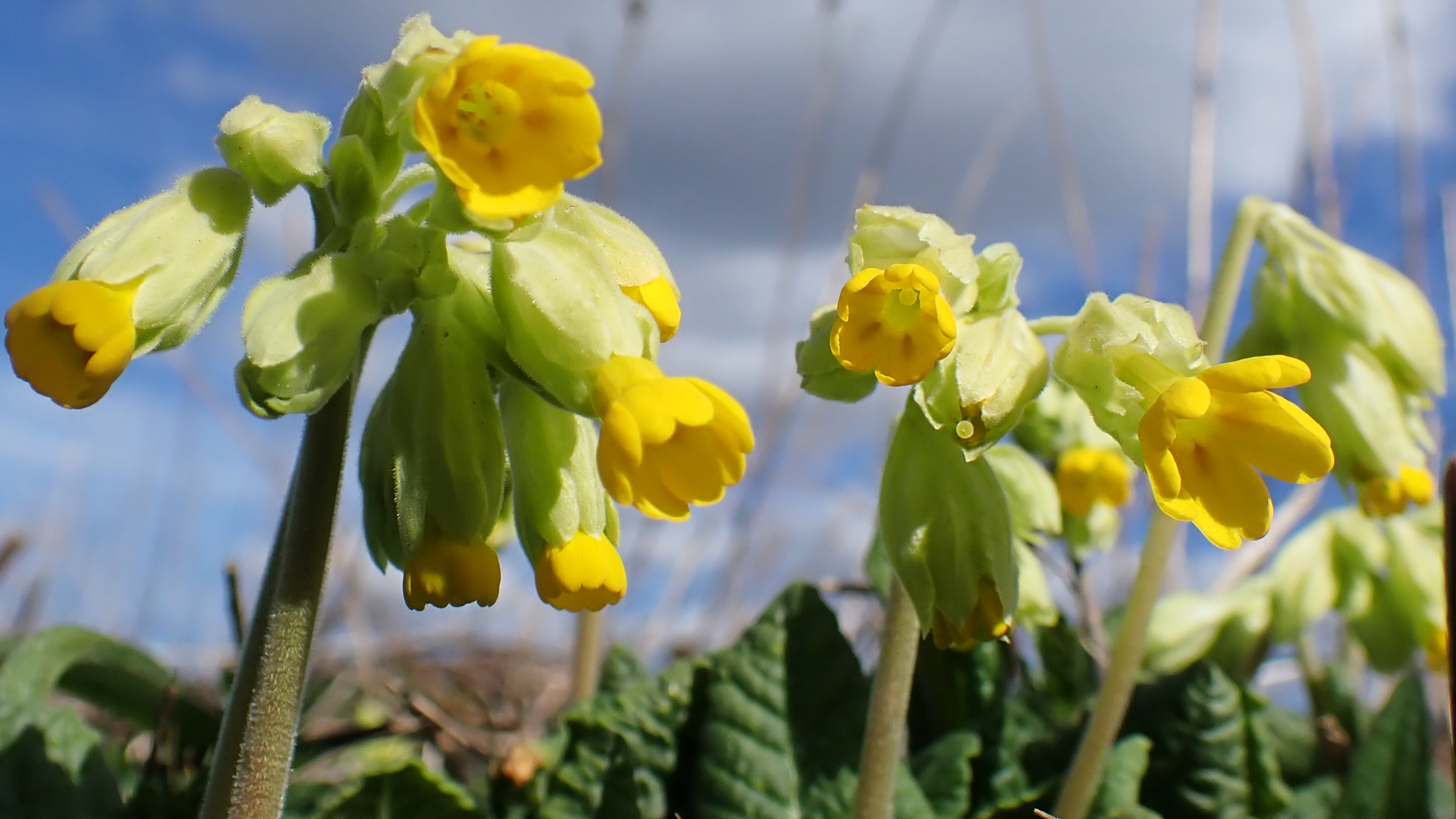
The Cowslip Primula veris is a herbaceous perennial found in the meadows during spring. It grows to a height of 25cm and has a rosette of basal leaves. The yellow flowers appear in clusters of 10–30 blooms together on a single stem.
Marsh Marigold
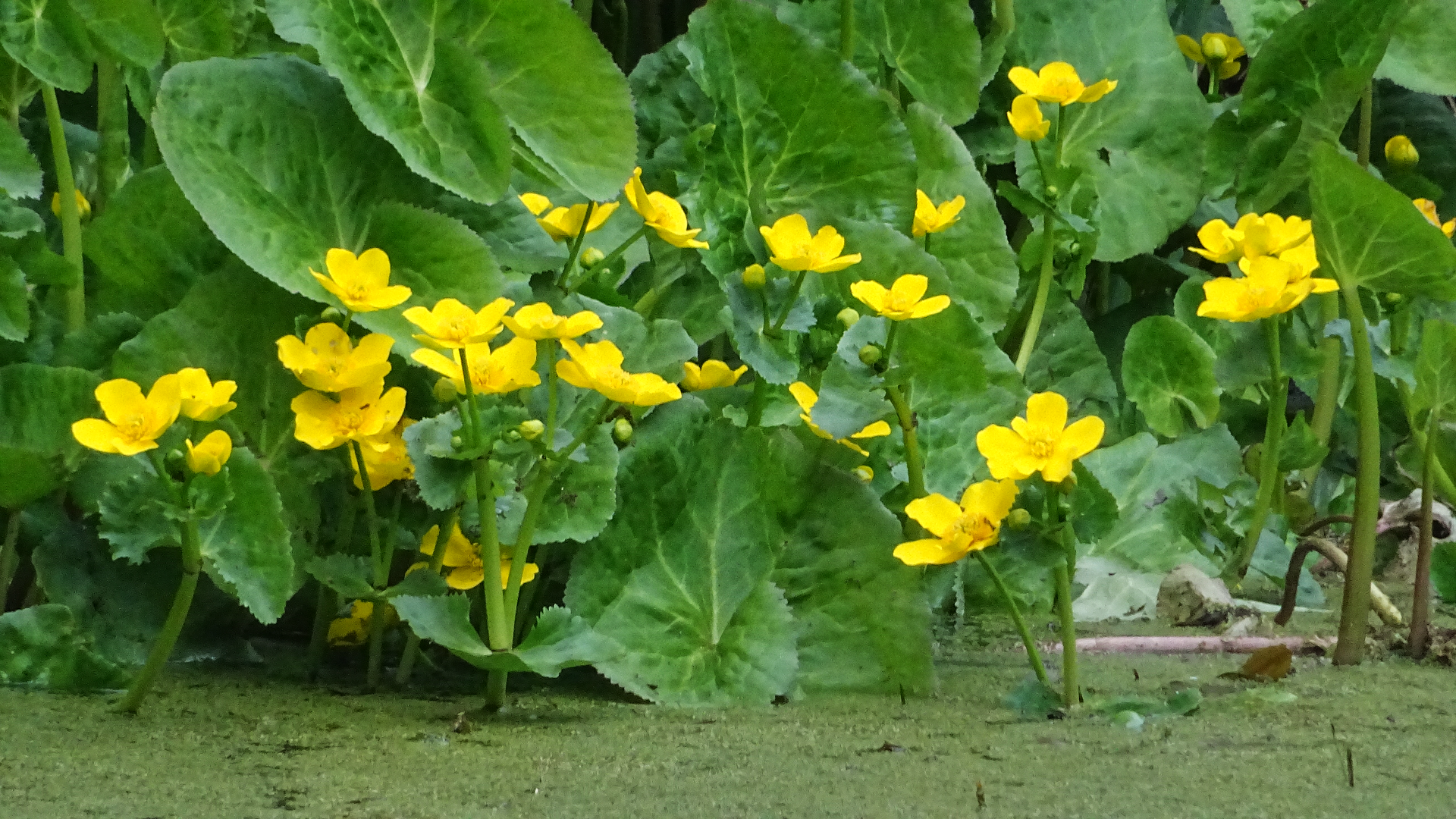
Marsh Marigold Caltha palustris is a member of the Buttercup family with a preference for wet locations and is often found around ponds. It is a low, thick-stemmed perennial with shiny dark-green kidney-shaped leaves. The flowers do not have petals, instead there are five yellow sepals. Appearing from March to July, the plant is sometimes called 'King Cup' because the large flowers were thought to resemble goblets. The plants provide an early source of nectar for insects and the large rounded leaves offer a place for frogs to shelter.
Oak Apple
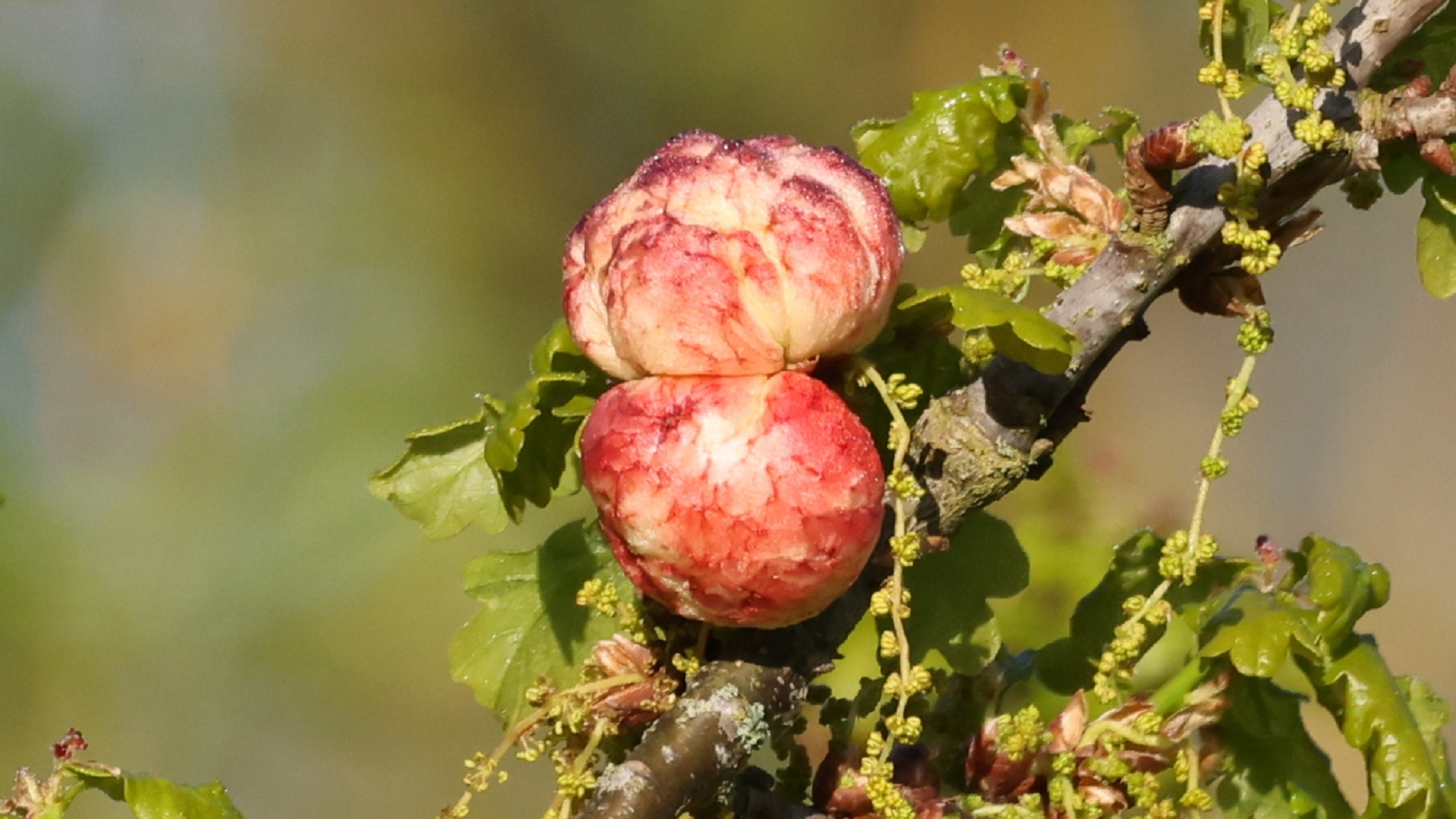
Oak Apples on English Oak are caused by larvae of gall wasp Biorhiza pallida. Eggs laid in oak buds produce spongy apple-like growths. Every 'apple' contains many chambers each enclosing a larva. These apples are not edible.
Chicken Of The Woods
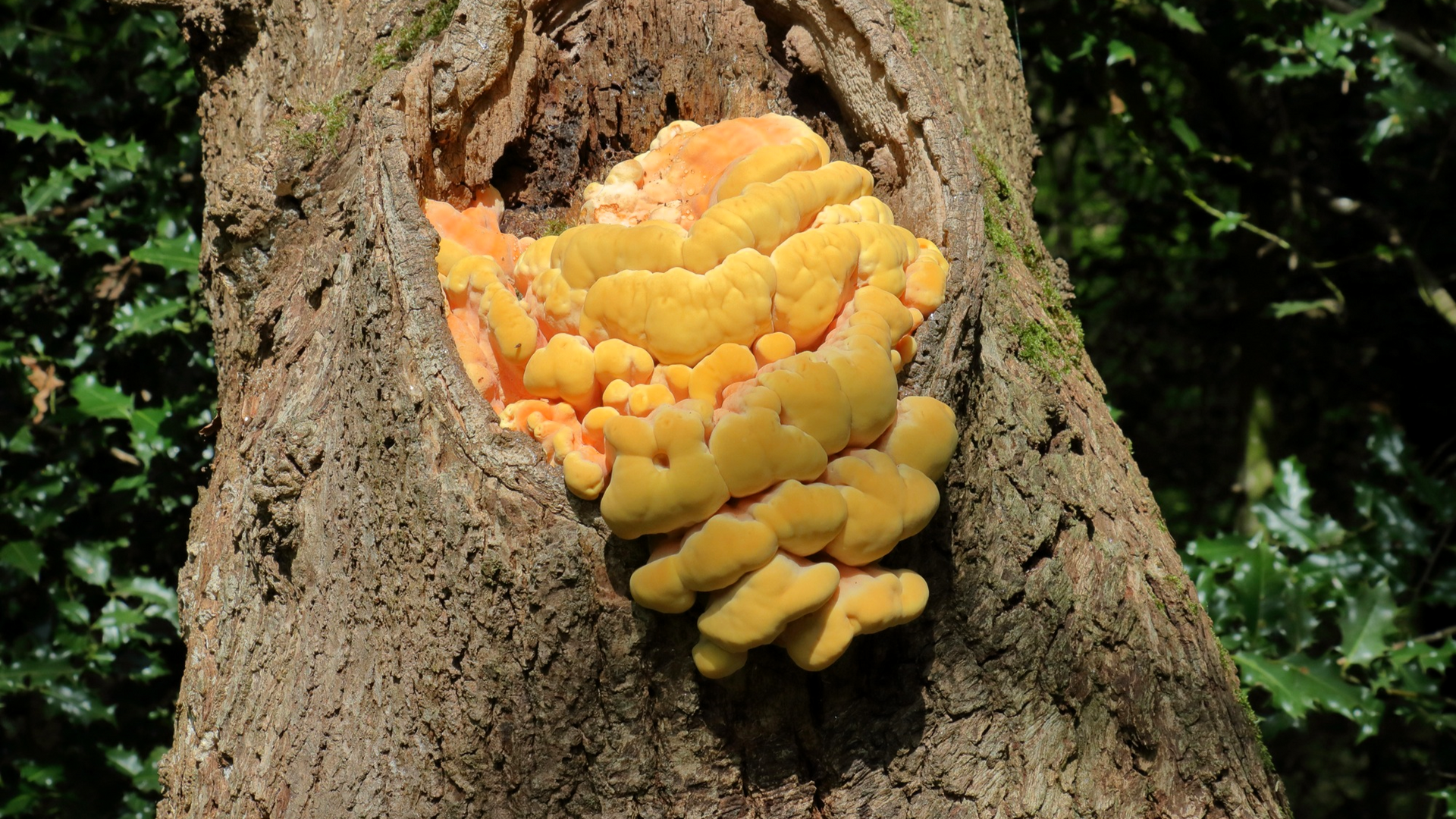
Young fruiting bodies of Chicken Of The Woods Laetiporus sulphureus are moist, rubbery and sulphur-yellow, sometimes with bright orange tips. Mature brackets turn pale and brittle and are frequently dotted with beetle or woodlouse holes. This fungus often grows in tiered clusters on oak and is occasionally found on other trees too. It is also known as the 'Sulphur polypore'.
Meanwhile elsewhere...
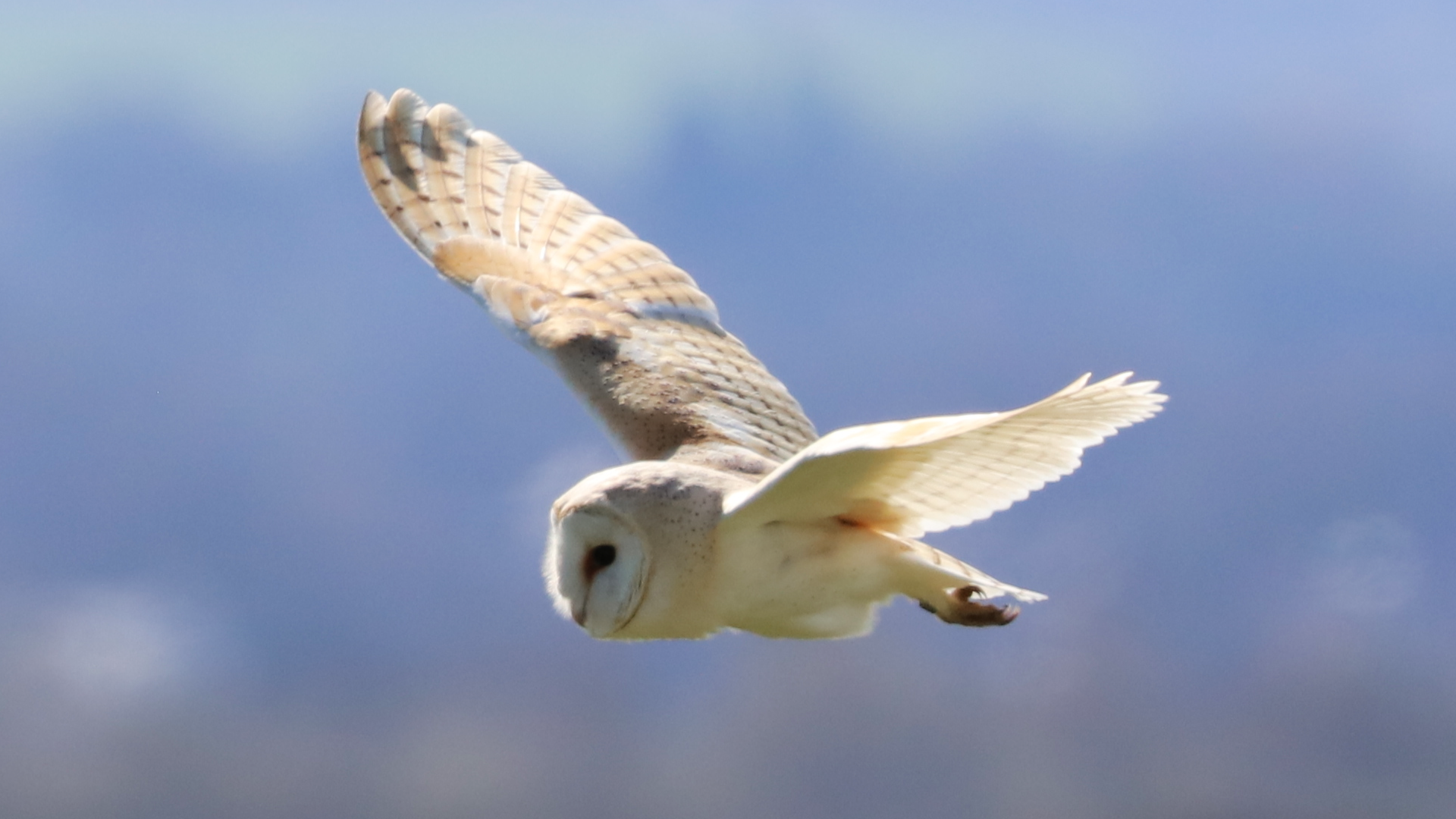
Elmley Nature Reserve covers 3,300 acres in North Kent. Barn owls are normally considered to be nocturnal flyers. However, they do take to the sky during the day, especially when hungry or feeding their young.
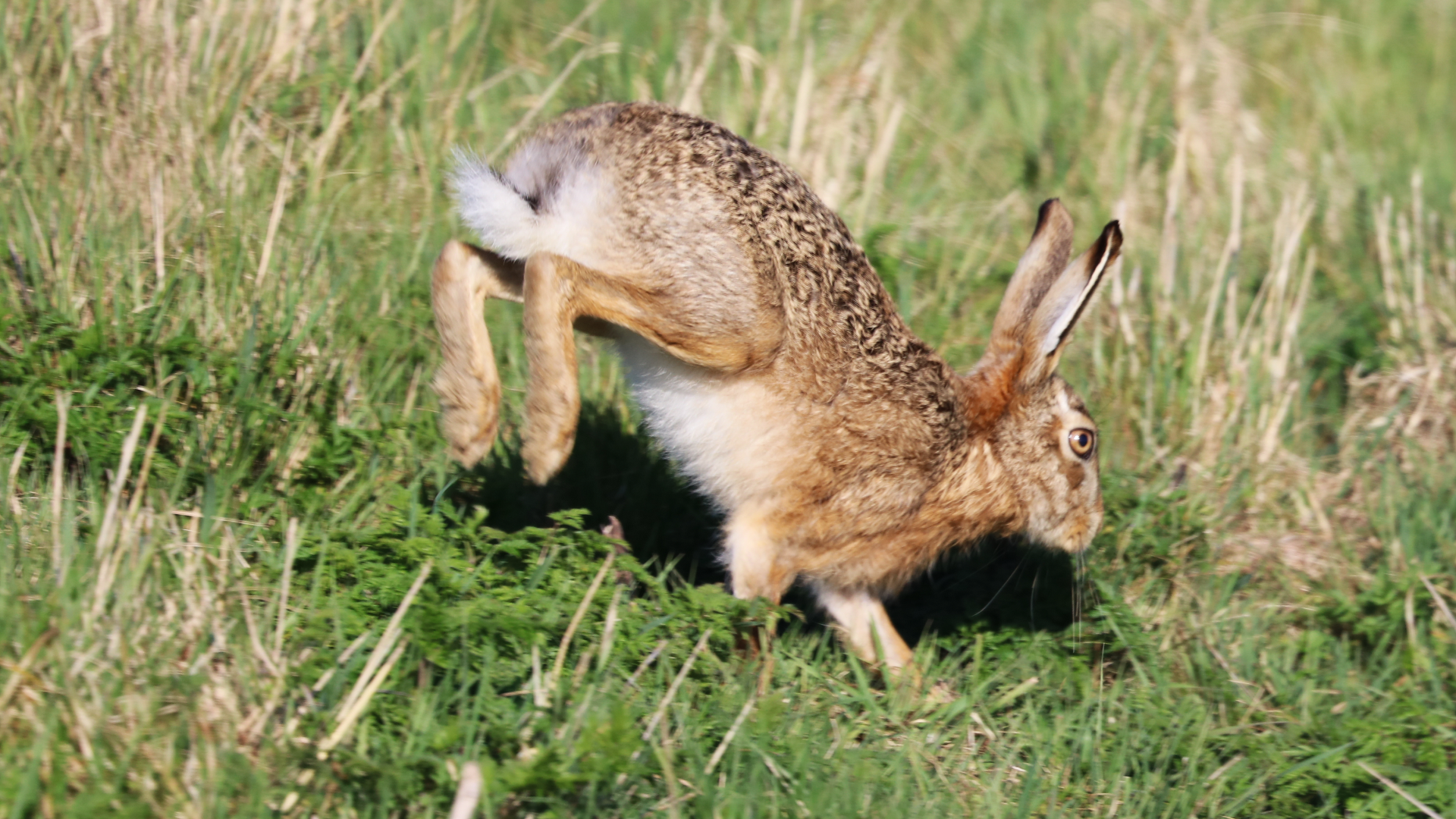
You are more likely to see a rabbit in Hainault Forest than a Hare. Hares are extremely fast and can be difficult to photograph. They have black tips on the ears and run rather than hop so can be easily distinguished from rabbits. One was spotted in Woodland Trust's Hainault Forest plantation last year, but unfortunately it was gone in a flash before the camera was out. Michael Trump had better luck at Elmley!
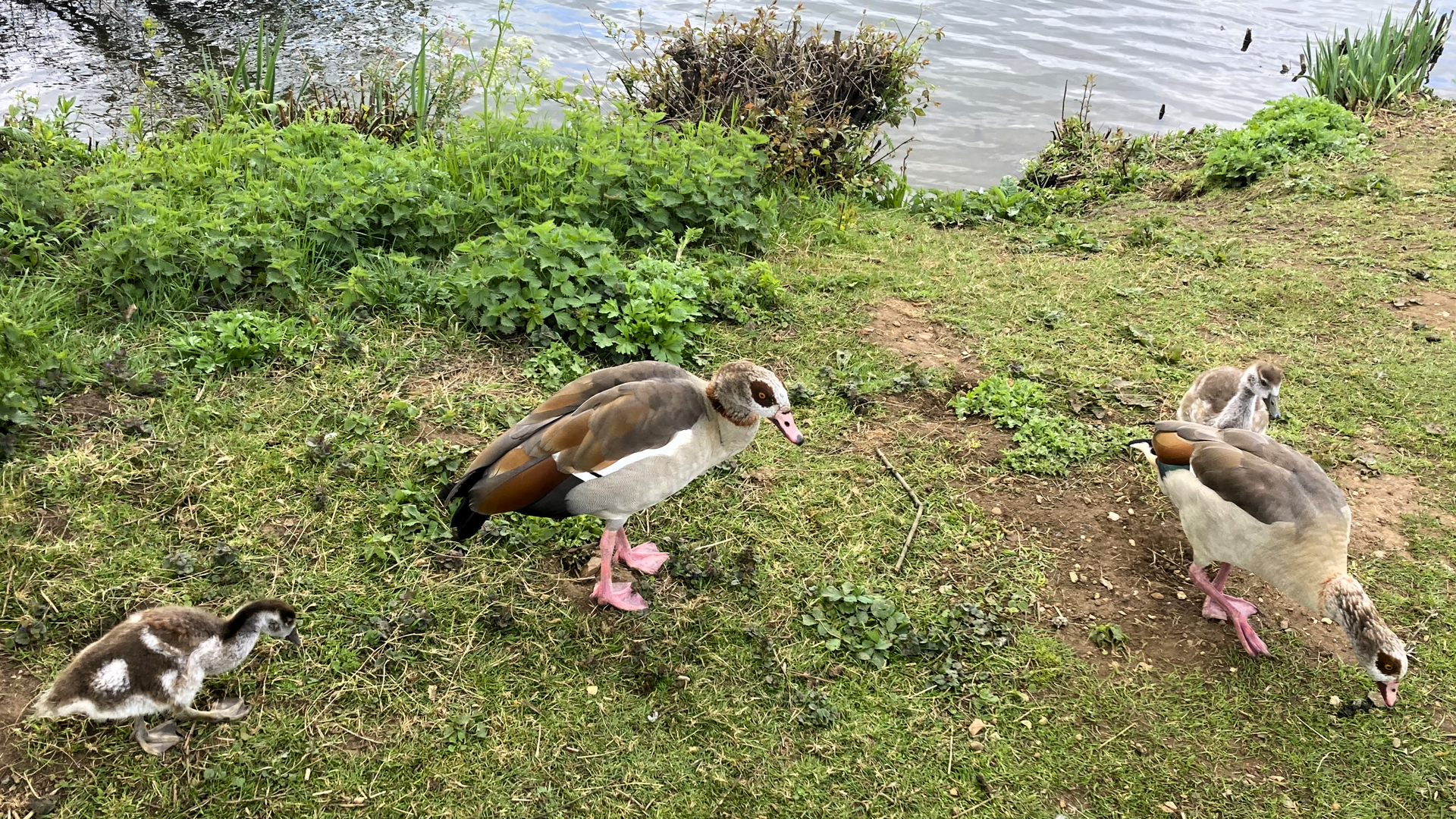
Roger sent in this picture of some interesting newcomers at one of his local parks. There have been no young Egyptian Geese at Hainault Lake this year (yet), but some were spotted at Fairlop Waters back in February.
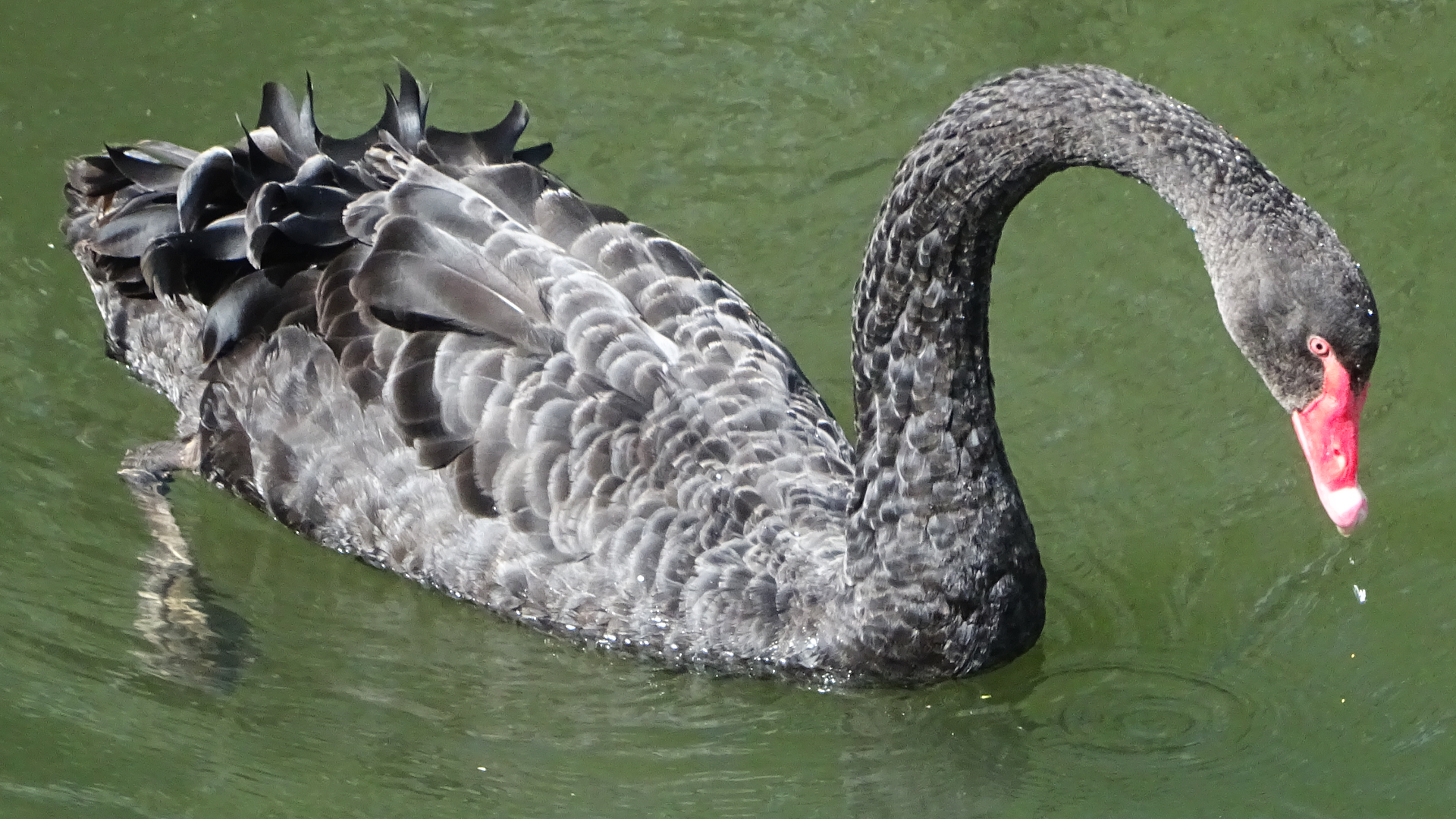
A Black Swan at Lea Valley. This species originates from Australia being introduced to Britain in the 1800s as an ornamental bird, becoming popular in zoological gardens and bird collections. Unlike Mute Swans, they are infrequent visitors to Hainault Lake and the last record held here was an individual that appeared on 13th April 2003 which had probably escaped from a collection.

A tranquil canal scene. Lea Valley Nature Reserve is a 26-mile-long park that stretches from Ware in Hertfordshire through Essex and into Greater London.
Thank you to everyone that has contributed this month.


